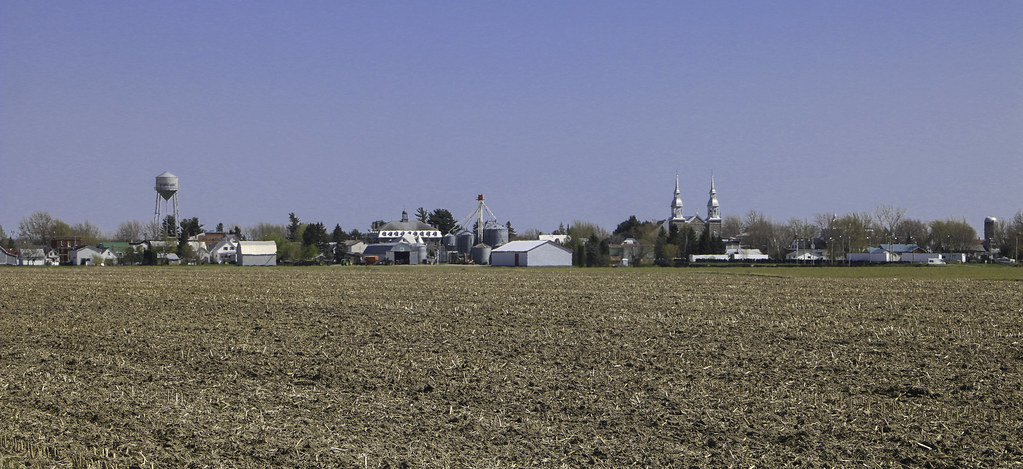Work brings me all around the french canadian areas (Québec, northern & eastern Ontario, Acadie) on a quasi daily basis. Here are the pictures of some of my travels. Most of them have been taken for documentary purposes.
1. May 13, 2018
NORD DE LA MONTÉRÉGIE
(Bas-Richelieu & Basse-Yamaska)
The first set brings us to the northern part of the Montérégie administrative region, in an area historically attached to lake Saint-Pierre. It's a very low area located 75 km north-east from Montréal, between the towns of Sorel-Tracy and Drummondville. The region lays on clay soils ; these alluvial plains are fertile, and water supply is generous due to the passage of 3 important rivers ending their course into the lake: the Richelieu, the Yamaska and the Saint-François. In the beginning of the 19th century, culture of hay made the surrounding villages prosperous, especially those located on the shores of the Richelieu and Saint-François rivers, with their busy rural ports. Today, the area's demography is stagnant, but the villages still bear considerable traces of their forgotten importance. A 65 kilometres journey through unseen lands from Saint-Roch-de-Richelieu to Saint-Guillaume, Québec.
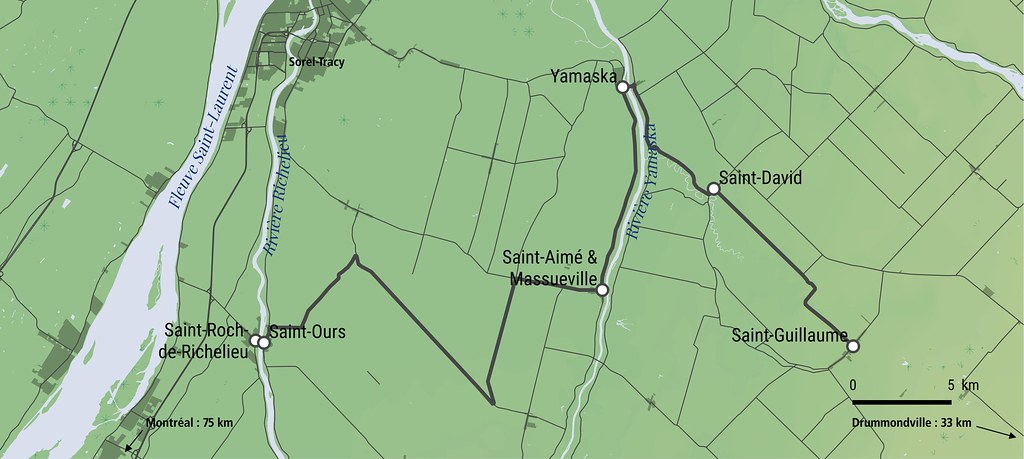

Population : 2238
Saint-Roch-de-Richelieu is located on the left shore of the Richelieu, at about 75 km north east of Montréal. It was founded in 1859 by Roch de Saint-Ours (a local noble) when the territory of the neighbouring town of Saint-Ours, overpopulated, was divided into 2 parts, on each side of the river. Saint-Roch owes its prosperity to the ferry linking it to the town of Saint-Ours ; many hotels and restaurants employed the local population until the 1950s, when it mostly became a suburb of Sorel-Tracy.
Saint-Roch church was built in 1861. Its main feature is its impressive porch bell tower. The approach by Saint-Jean-Baptiste street :


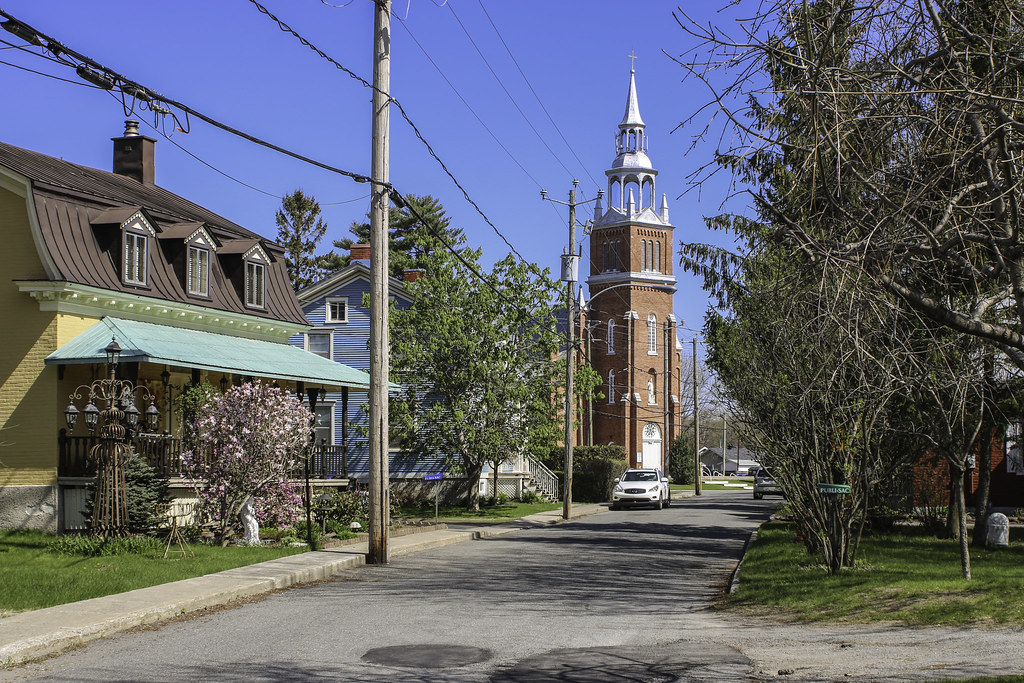
The Richelieu lowlands are located on the clay of the former Champlain seabed. Thus, the church and most of the important buildings in the village of Saint-Roch are built out of clay bricks.
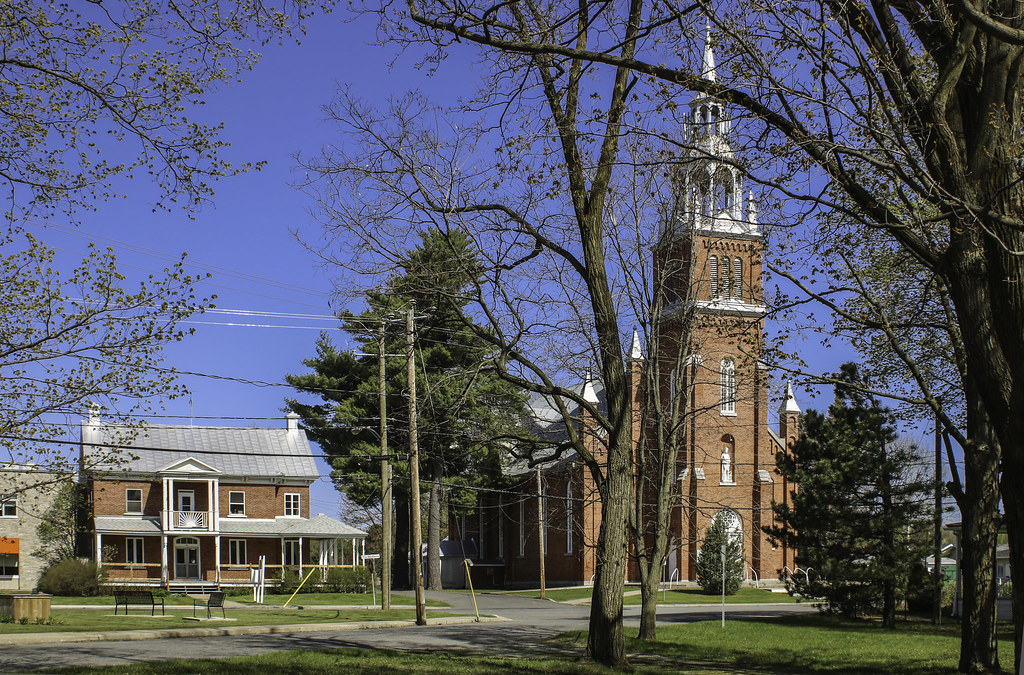
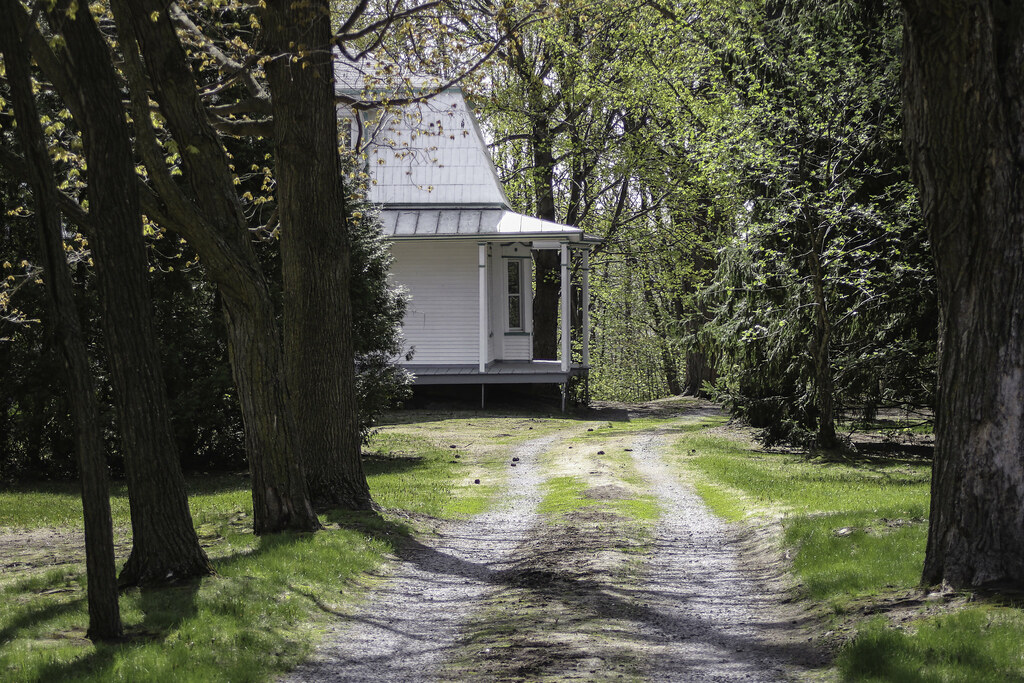
Typical proletarian architecture
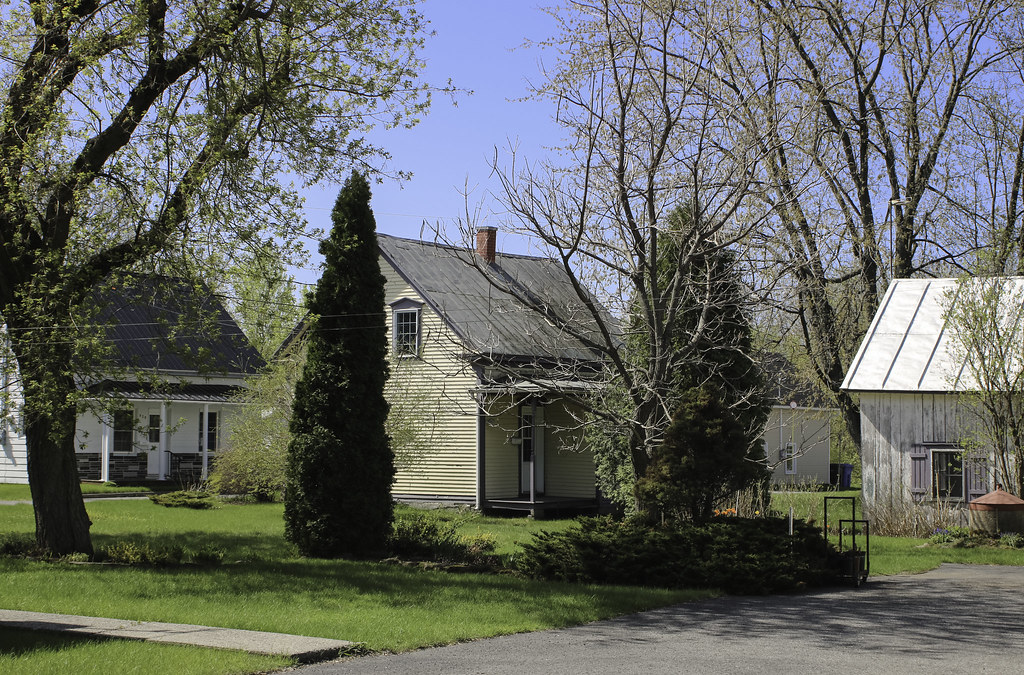
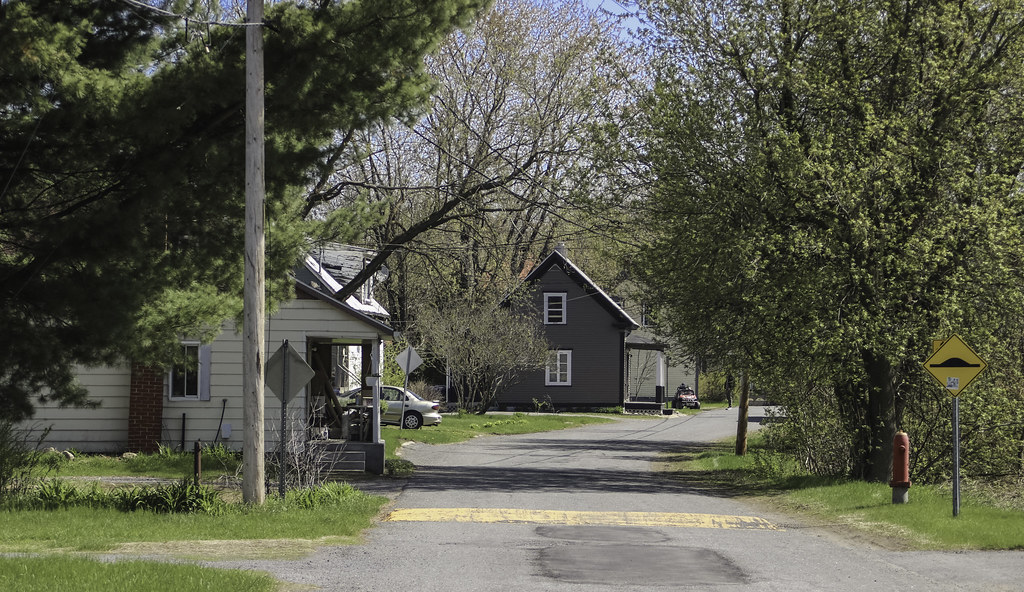
As we leave Saint-Roch on the ferry, a last glance towards the brick steeple
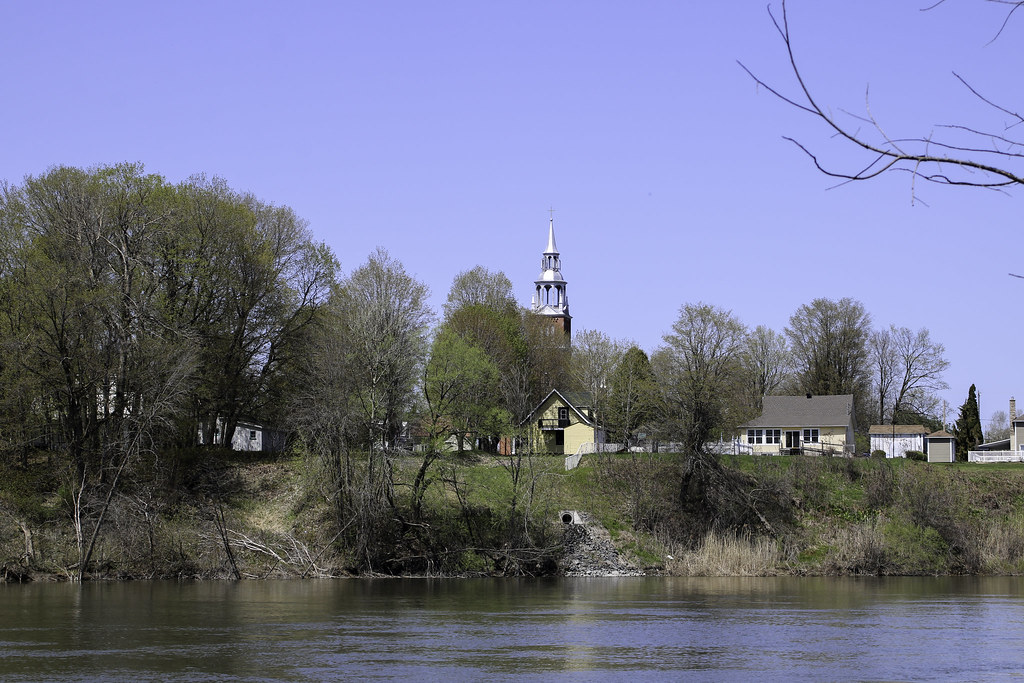

Population : 1706
Just on the other side of the river is the small town of Saint-Ours. From Saint-Roch-de-Richelieu, we can access the town by a small ferry ; this installation is typical of the Richelieu valley. The villages along the river always come in pairs, and each pair has its ferry. With the ferries comes a very typical job in the region : «passeur» (could be translated into ferryman I guess).
The Saint-Roch/Saint-Ours ferry is operated from April to Decembre since 1818. It has been owned by the Larivière family since a century. It has a capacity of 30 people/cyclists and maximum 6 cars, and from experience, it is highly efficient !

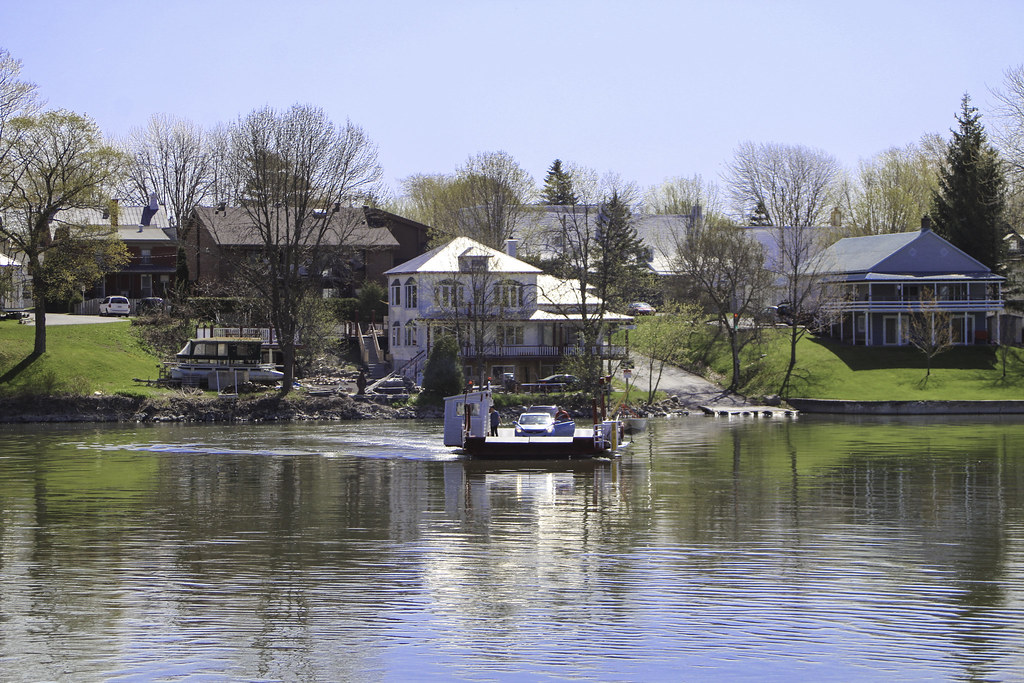
Saint-Ours, seen from the ferry :
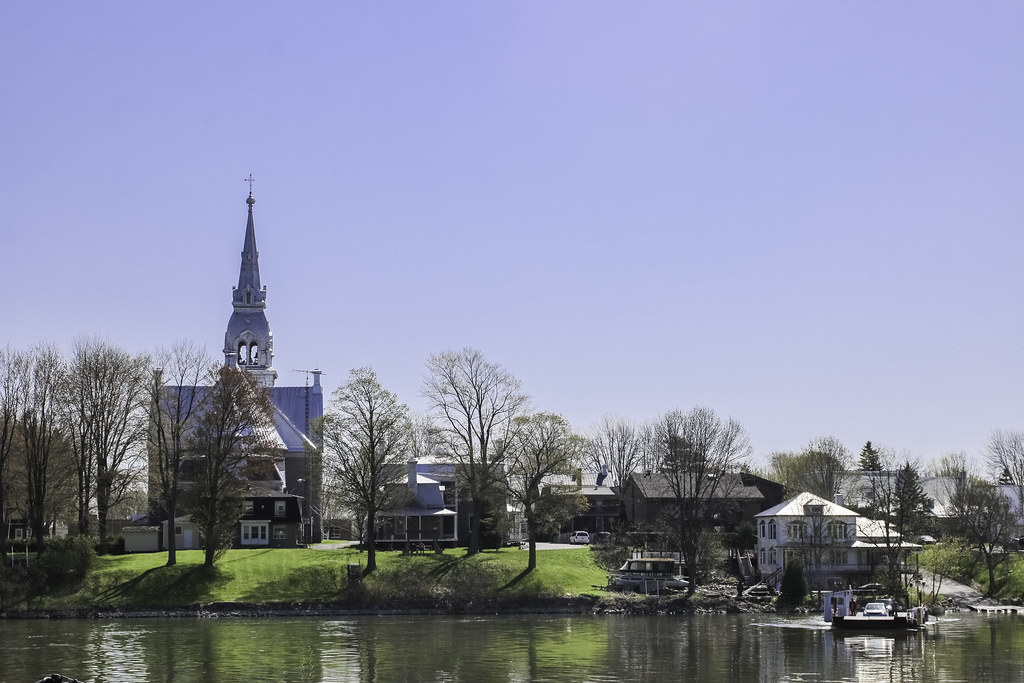

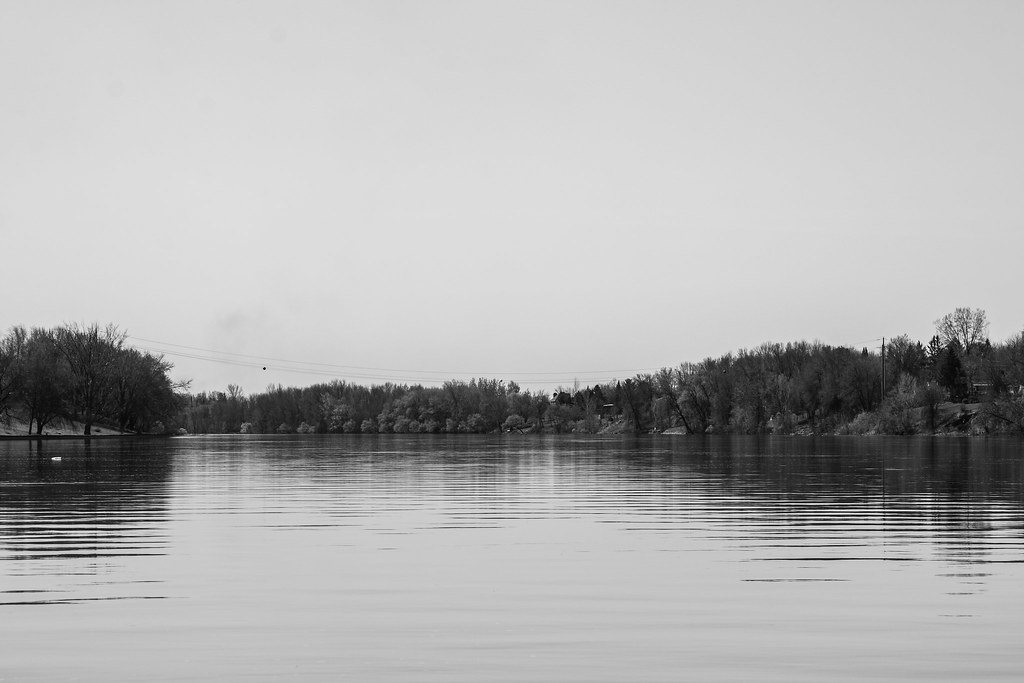
Founded in 1650, the town of Saint-Ours certainly deserves to be recognized amongst the oldest settlements of Canada. It knew economic prosperity quite soon, and the Edict of the King of 1722 turned the village into a
bourg with a charter.
The name evokes Pierre de Saint-Ours (yes, it was Roch's brother), a famous captain in the Carignan-Salières regiment, who was granted the Saint-Ours seigneury. He soon became commander of Fort Chambly, and then captain of the canadian troops from 1687 to 1708. The town took his name. In 1703, a first mill was set on the shores of the river. The
Fils de la Liberté (canadian patriots of 1837-1838) had their first meeting in the town, where the Declaration de Saint-Ours was adopted (12 resolutions concerning constitutional rights of the Canadien people, rights of land ownership, trade, secession, etc.) This document profoundly displeased the British colonial authorities and lead to the Patriotes rebellion (an attempt of secession of the Canadiens from the british colonies).
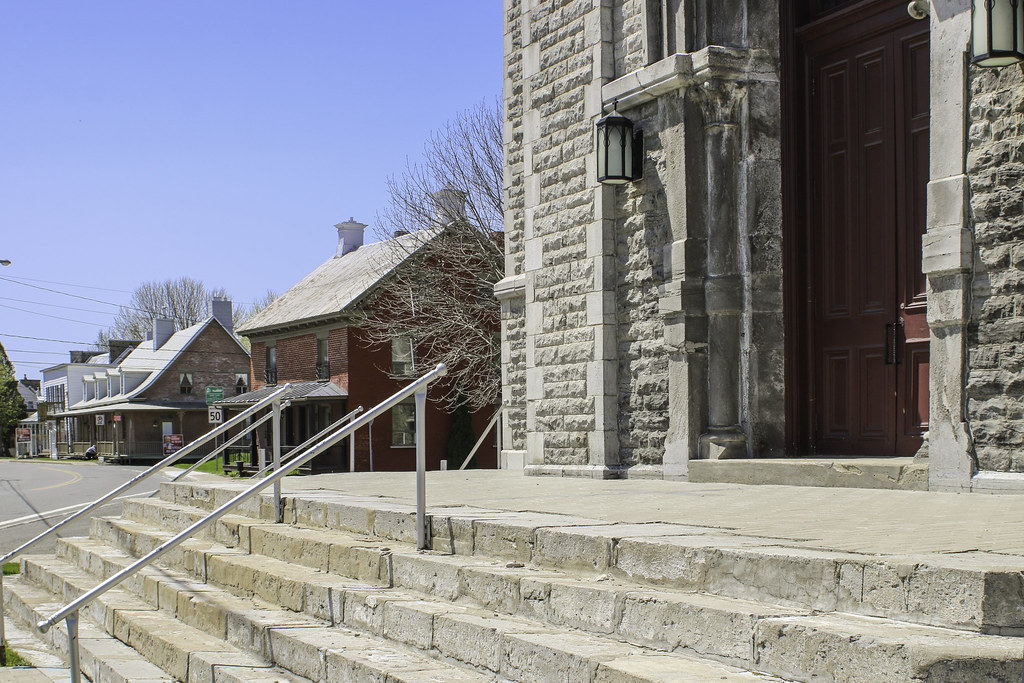
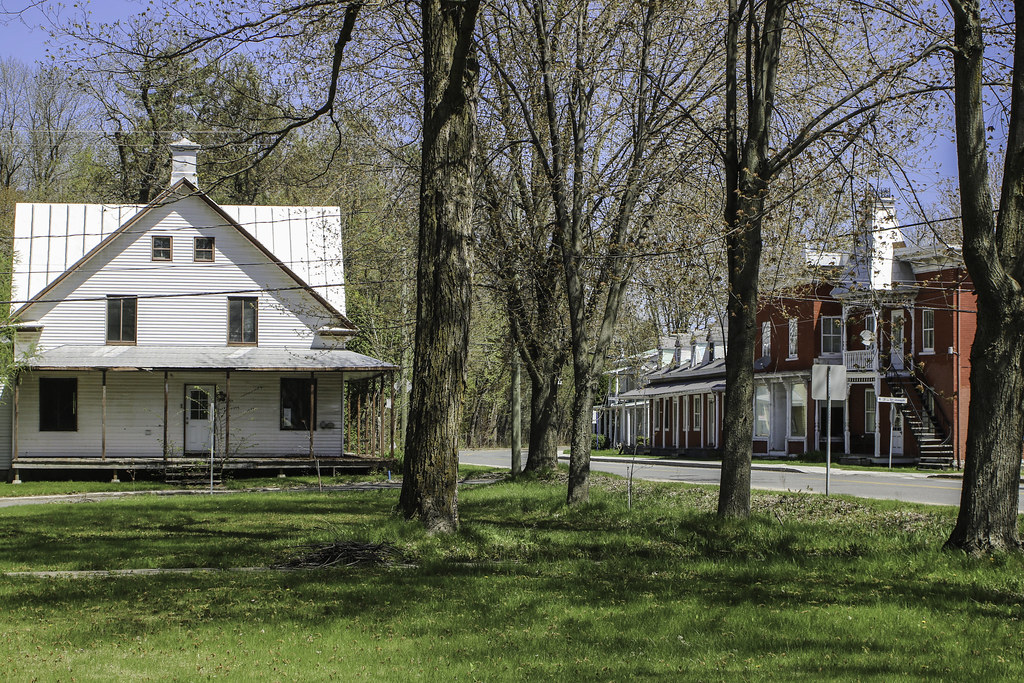
Between the church and the river, the narrow streets of the village plunge into the waters, offering quaint spaces for living. The steeples of the village are always in sight.

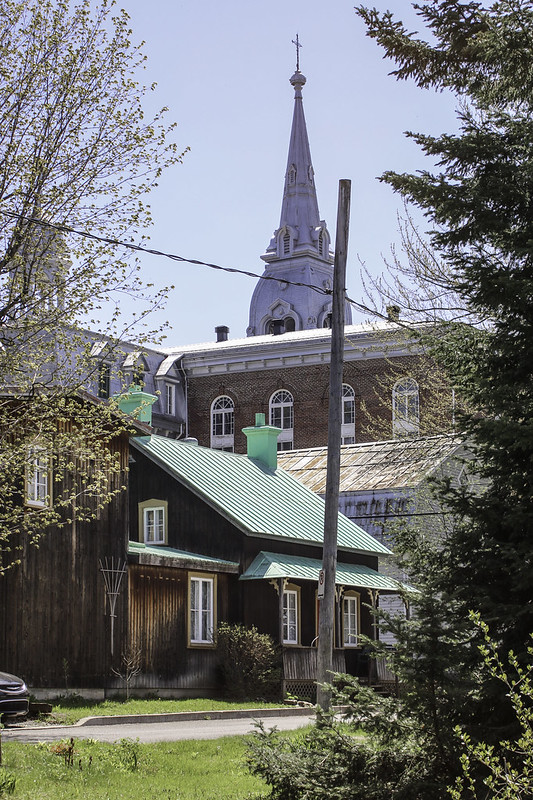
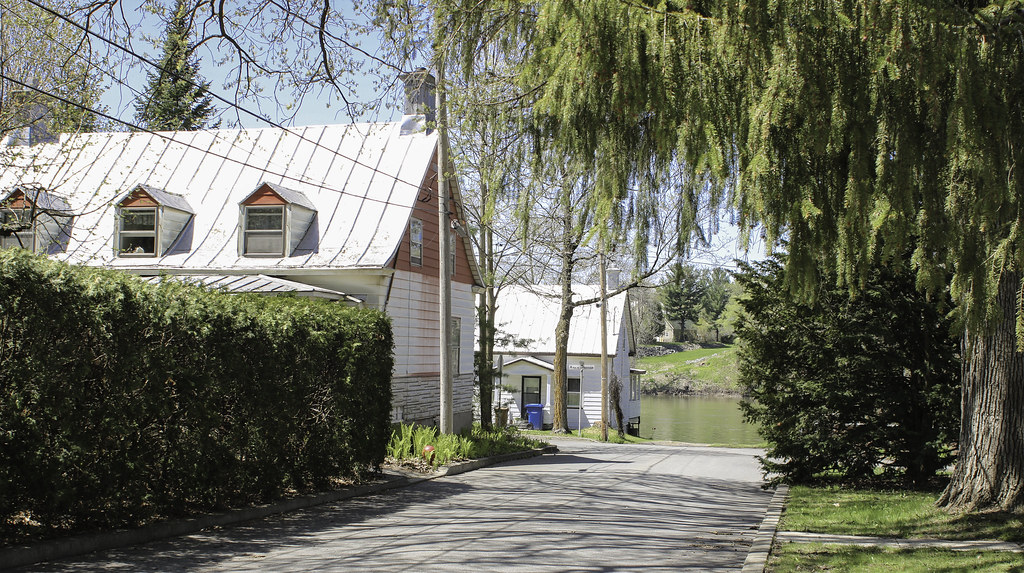
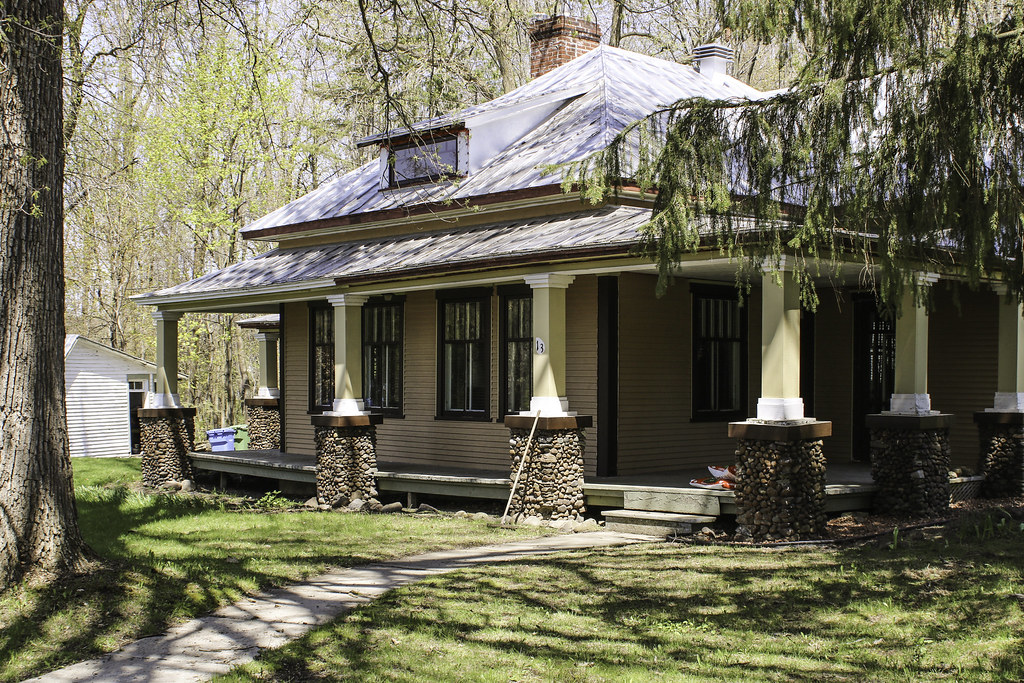
A series of streets form a tight grid, east of the church. Typical
québécois village scenery...
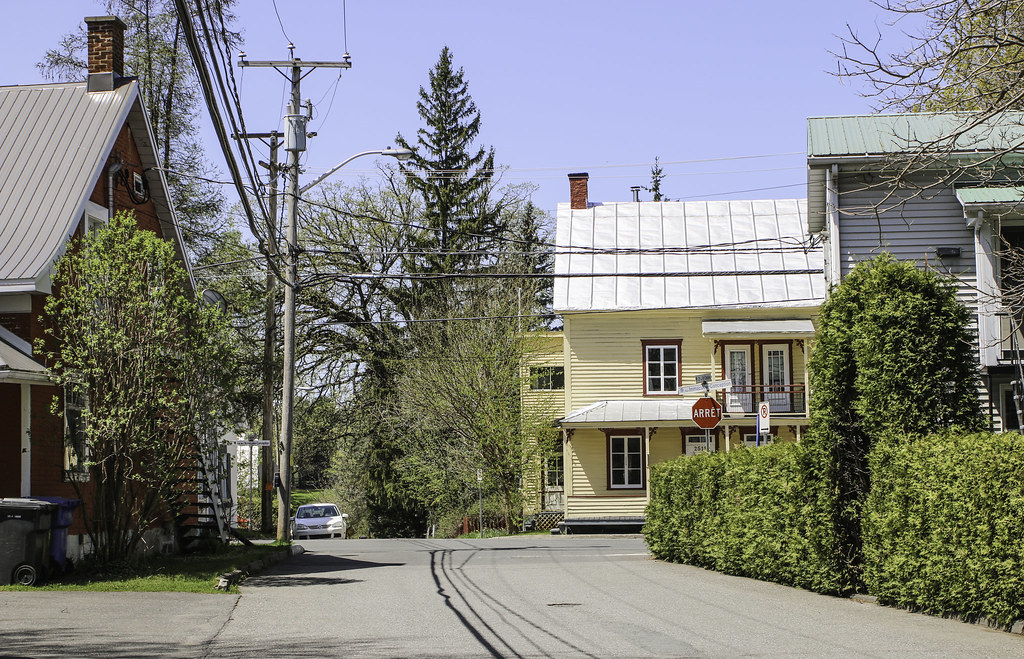
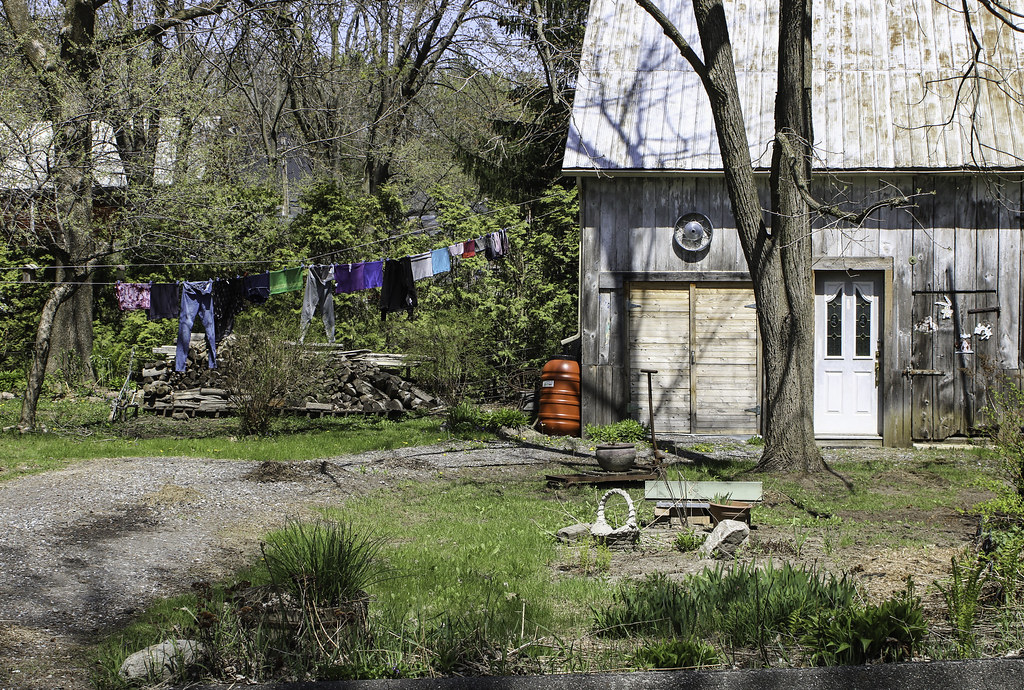
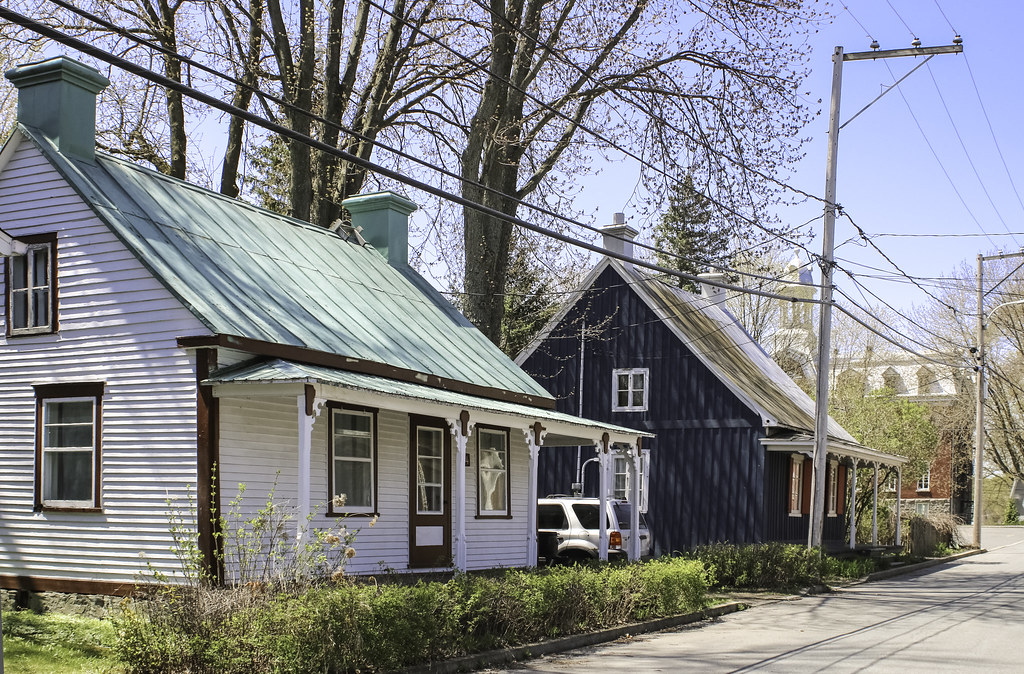
The main, Immaculée-Conception, was named after the catholic parish and the church. It follows the meanders of the river.
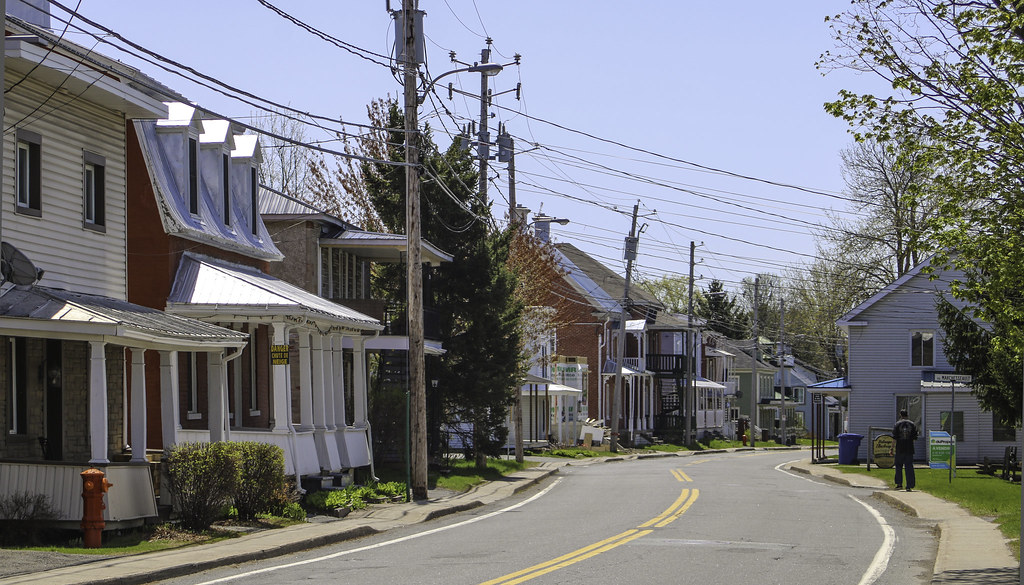
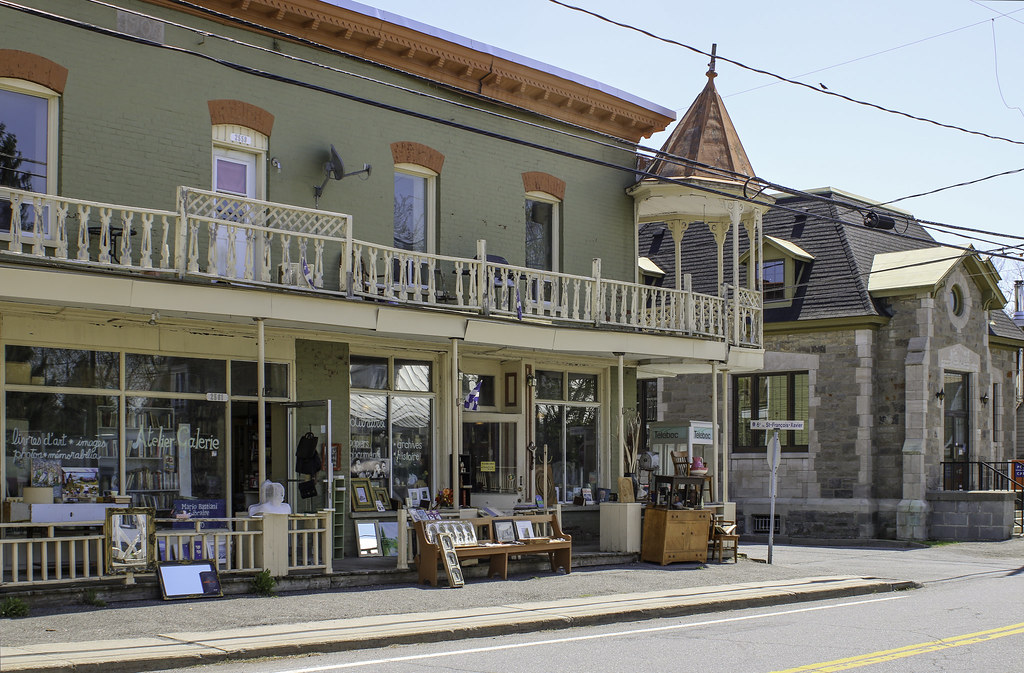
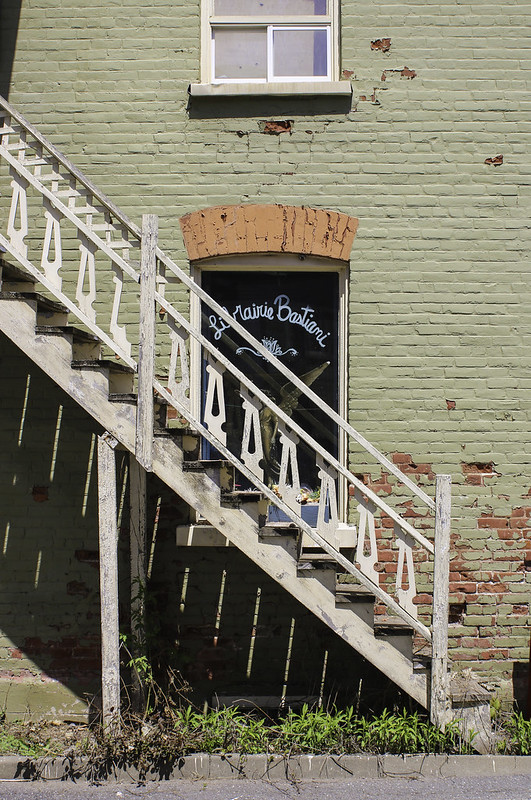
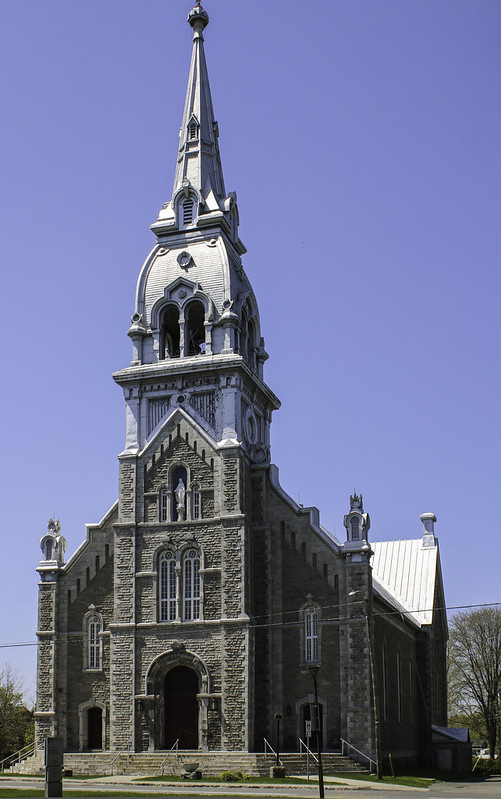
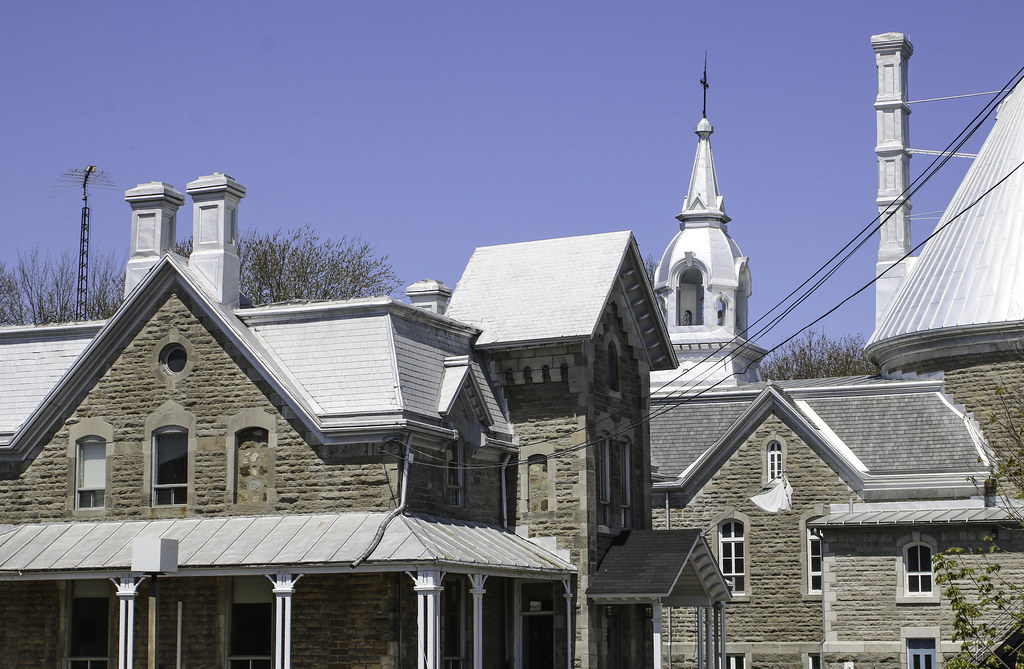
Saint-Ours Family's seigneurial residence is hidden under a dense canopy on Patriotes road. I am sorry for the poor quality of the pic, but the actual owner wouldn't want to let me photograph the house. I kind of stole the shot.

In front of the manoir, Immaculée-Conception street leads to the centre of Saint-Ours
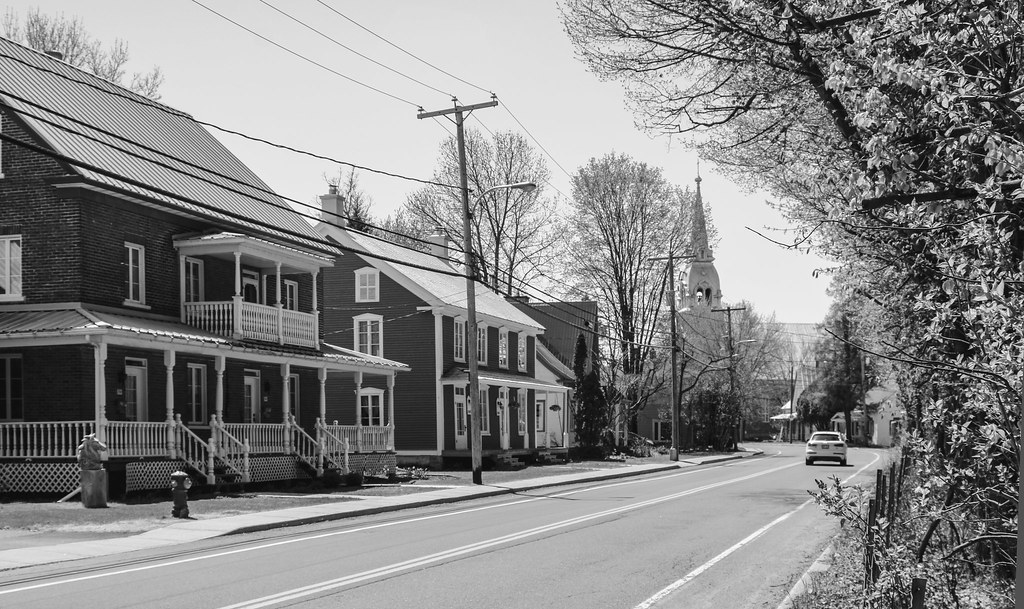
The convent is located right beside the church. The Patriotes' green-white-red flag still floats in front of civic buildings in the Richelieu valley.
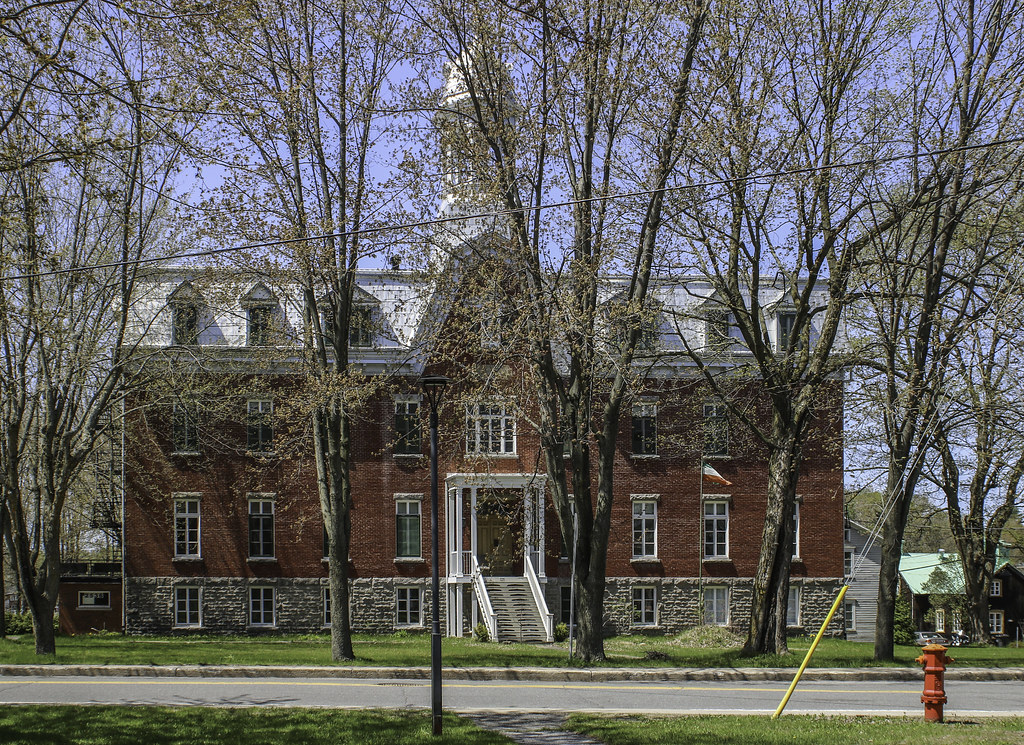
As it is the case in most of Québec's villages, the church totally dominates a landscape of modest village homes


&

Population : 495 in the rural parish of Saint-Aimé, 503 in the village of Massueville
Next village is Massueville, but the old locals still call it Saint-Aimé, the actual name of the parish and former name of the rural agglomeration. It is a surprisingly pleasant village
clustered around rectangular common grounds, along the banks of Yamaska river. In the middle of the commons is a covered market hall, where the farmers of the area come every week to sell their products.
In this rather rural and agricultural area, it is surprising to find a village with the bones of a small industrial town. That's what Massueville is. Though the seigneury of Bonsecours was settled in 1702, the village was only founded in 1834. It took the names of the founder and donator of land for a church, Mr Gaspard-Aimé Massue. A convent and a college were also built. In 1834 also, the grid plan of a town was traced, and the common lands were reserved in front of the church by a local citizen. With the affluence of new citizens, industry thrived : navigation and transportation on the river, wood transformation, oat production and transformation, coachwork, horse breeding and, of course, agriculture in general. At its peak, the village had some bakeries, forges and general stores.
Today, Massueville is in decline, though being only an hour away from Montréal. It lost half of its population in a 50 years span. There is no highway leading to the nearby towns, so the village is isolated. The railroads were dismantled. Regulations for the protection of agricultural lands restrain the growth of the village, and the intensification of agriculture and merger of the familial farm holdings into mega farms means even less people on the country roads. Young adults are obliged to move to the cities of Sorel-Tracy, Drummondville, Saint-Hyacinthe or Montréal to pursue college education, and very few come back to their native village.
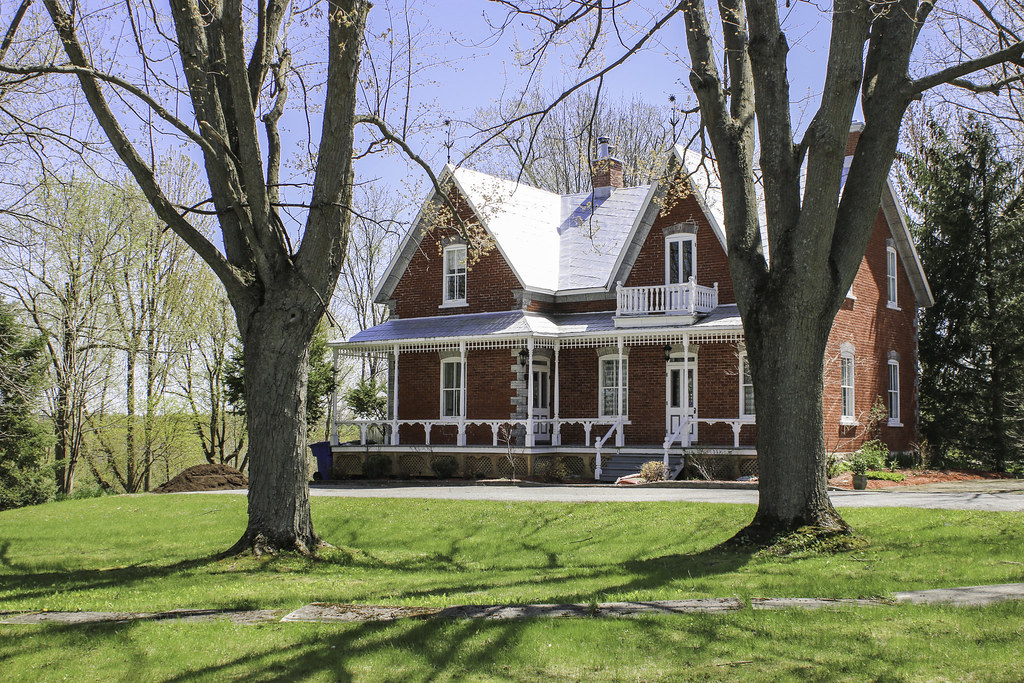
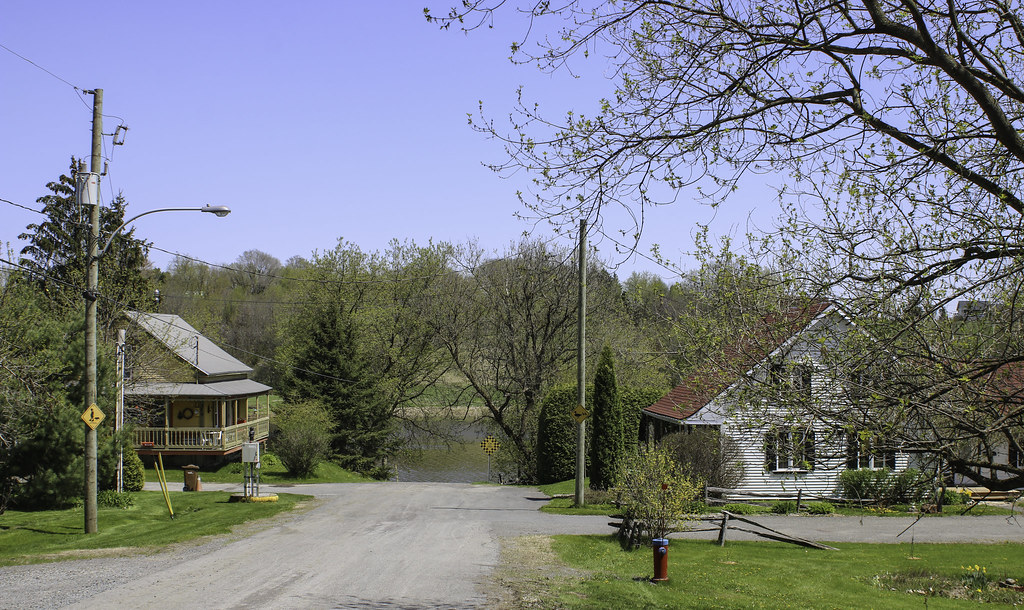
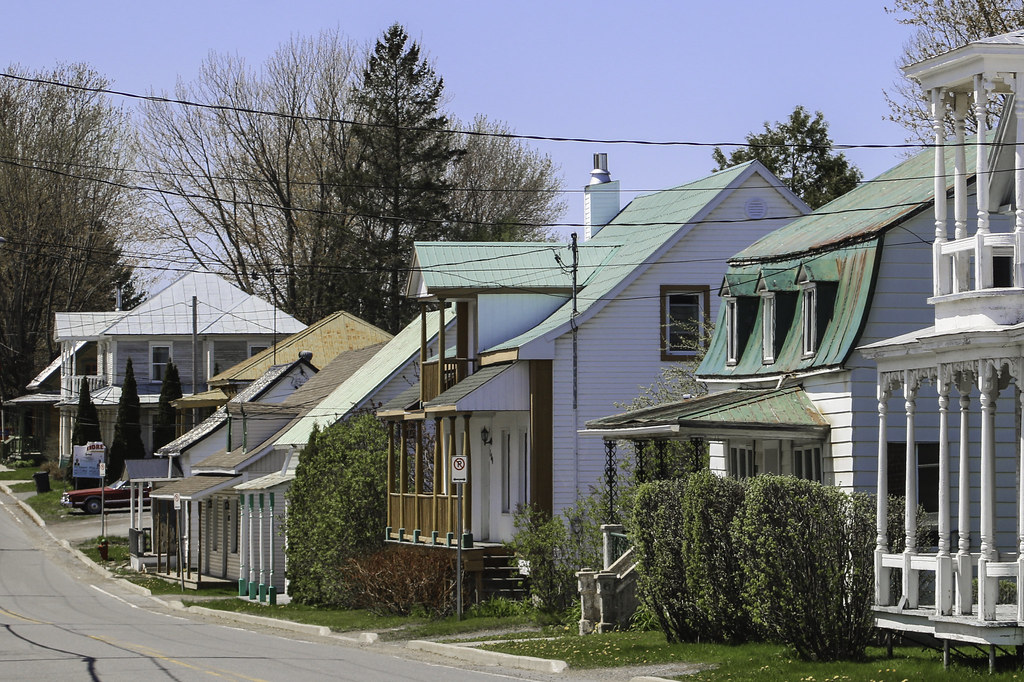
The common grounds as seen from the church doorsteps :

Saint-Aimé church was built in 1841. After a major fire in 1907, it was rebuilt in this traditional rural-québécois style (neo-classic, latin cross plan, with two steeples - very common around here). Architect : Alexis Millette.
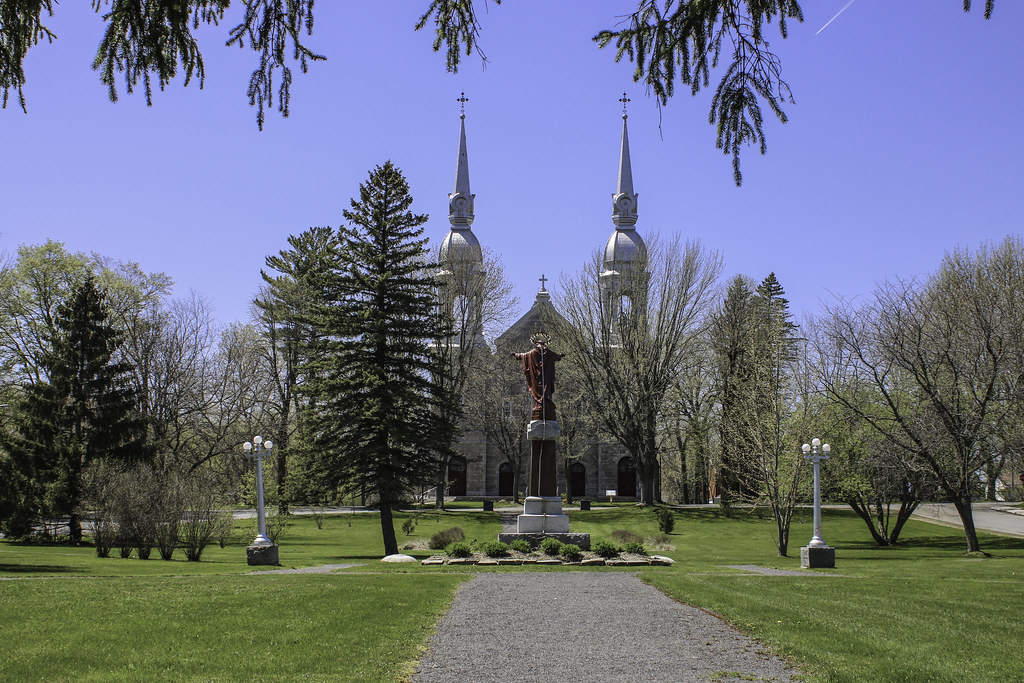

In the middle of the commons, the market hall
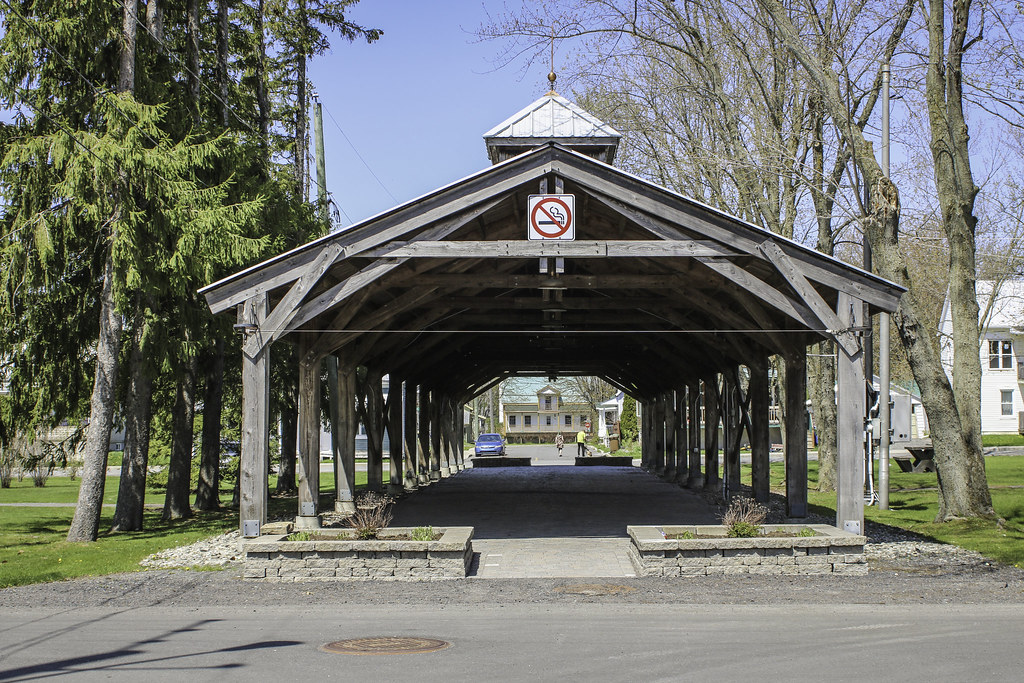
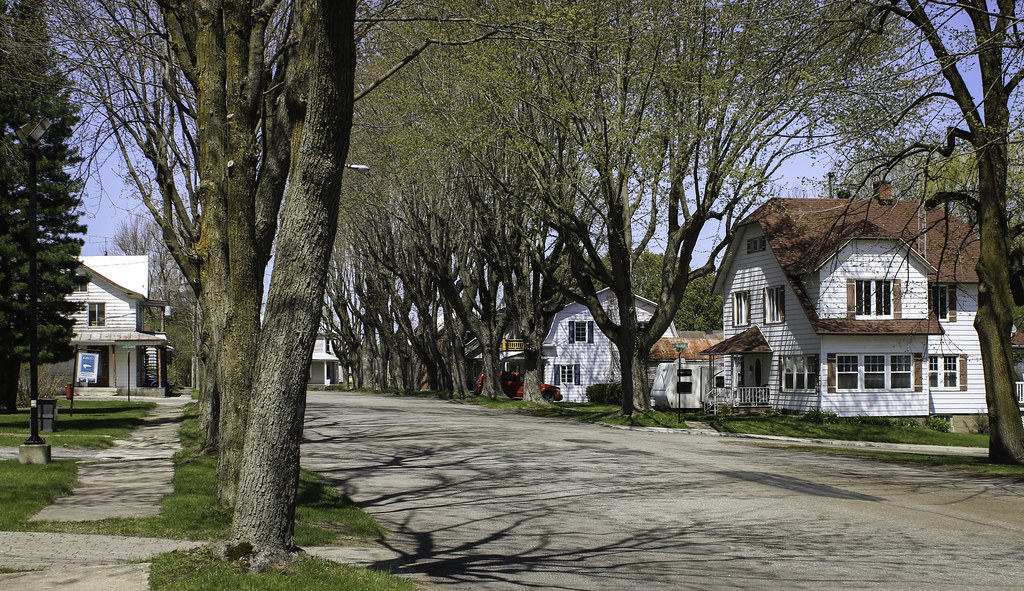
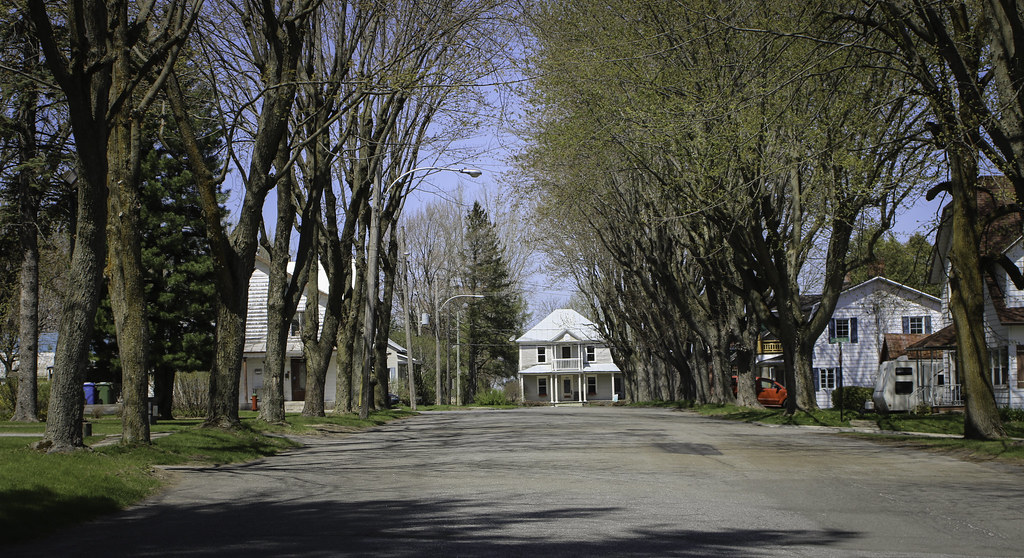
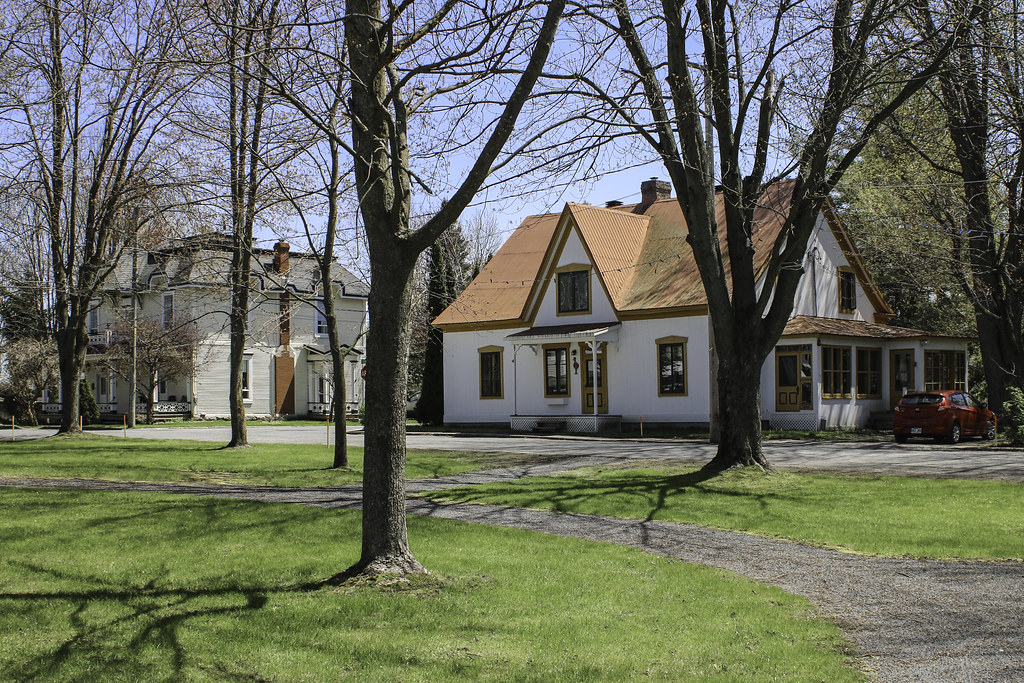
Yamaska river valley and typical farmland landscapes of Saint-Aimé
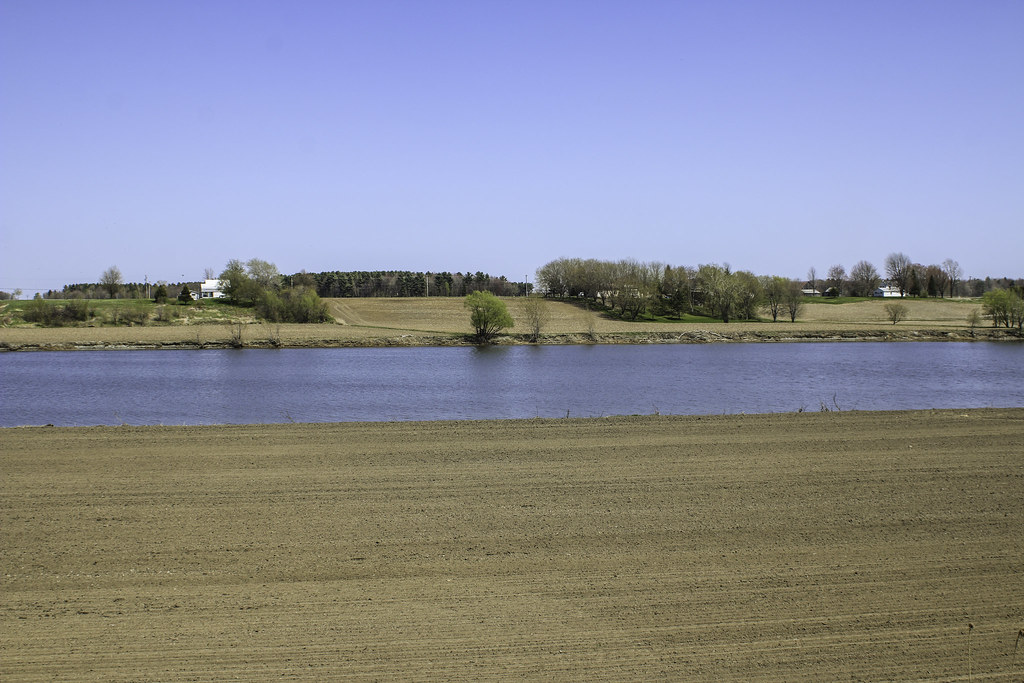

Population : 1589
Following the course of the Yamaska 11 km downstream, we reach the lively village of Yamaska, settled as of 1683 and officially founded in 1722. It is enjoyably located on both sides of the eponymous river, and both shores are linked by an interesting 300 m. long steel bridge. The village is still alive due to its position halfway between the towns of Sorel and Nicolet, on a busy national road (132).
The name Yamaska comes from the ancient Abenaki word
iyamaskaw, which would mean "large rush and hay-covered tidelands". This wild hay was traditionally used for the roofs of barns and farm houses. The contemporary Abenaki name for the place is Mamaska ("toad" in english).
Au cours de la guerre de l'Indépendance américaine, un fort y sera construit pour mettre fin à la contrebande des armes à feu acheminées d'Europe via le Saint-Laurent.
Yamaska river and Camille-Parenteau bridge
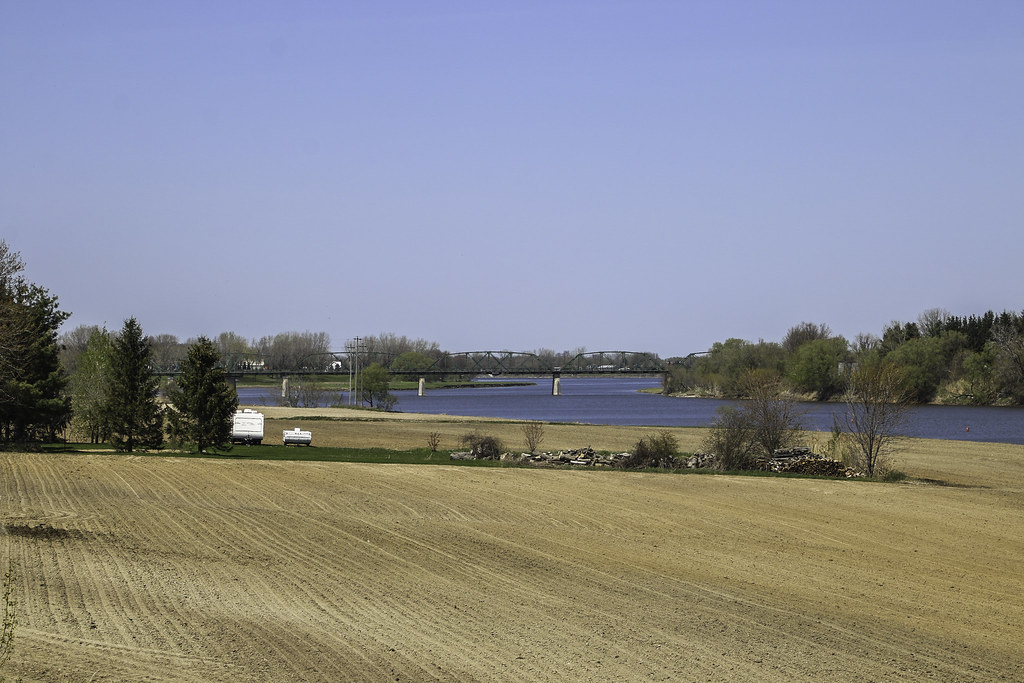
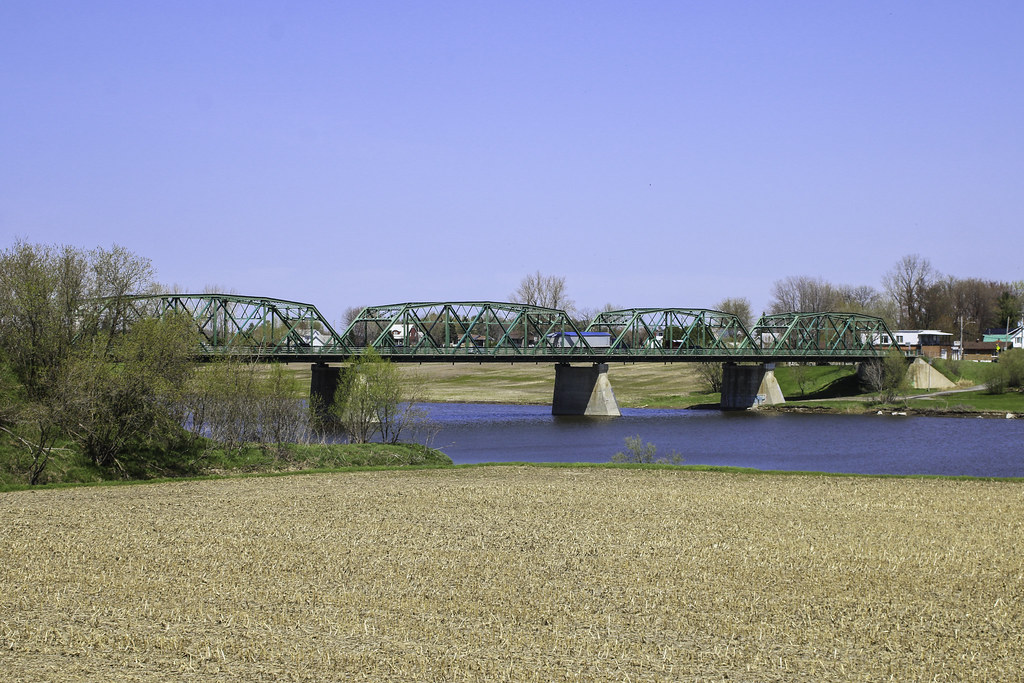
Principale street
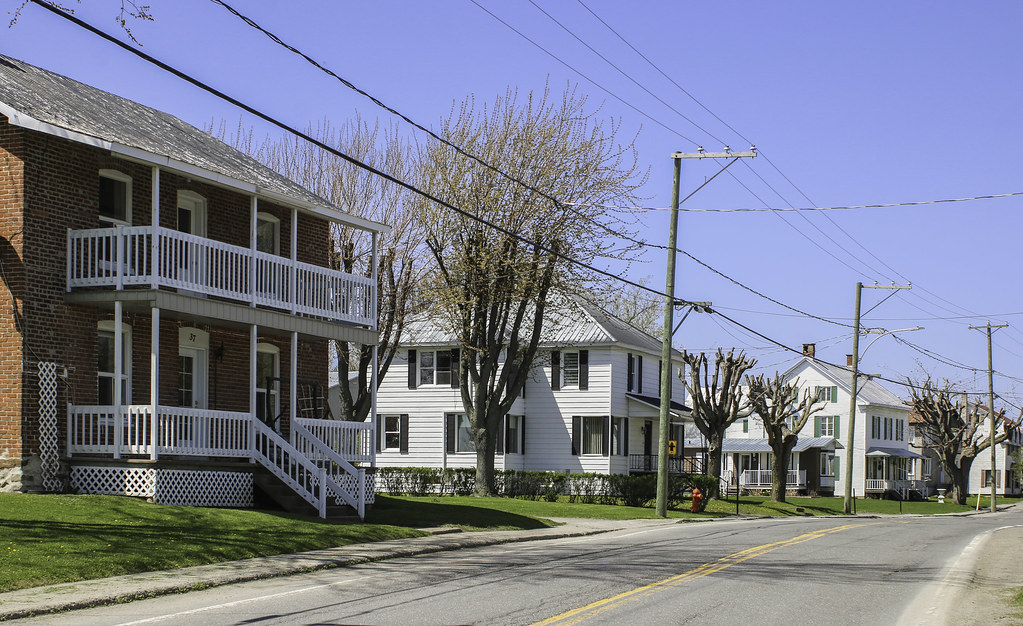
The disorganized appearence of the commercial core is typical of what is found elsewhere in Québec
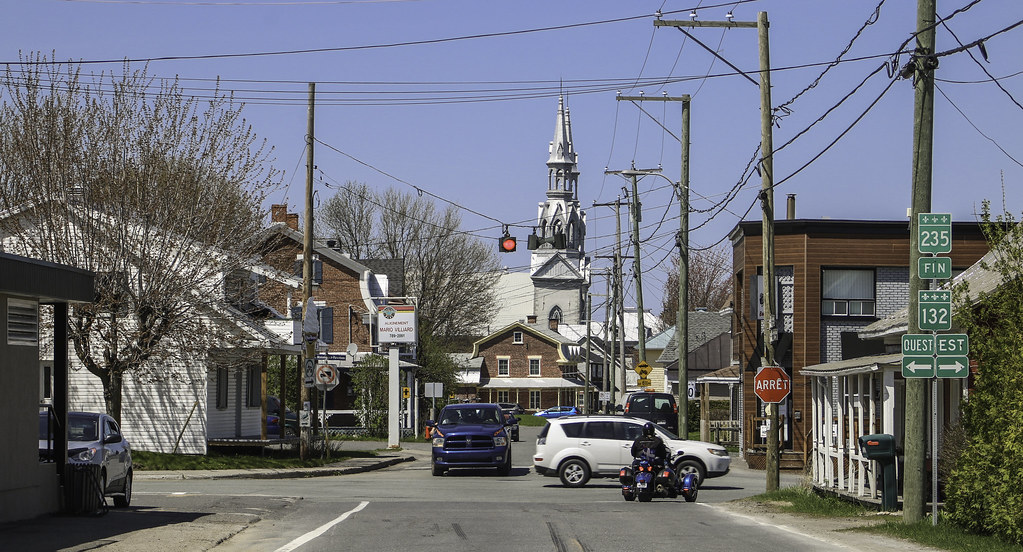
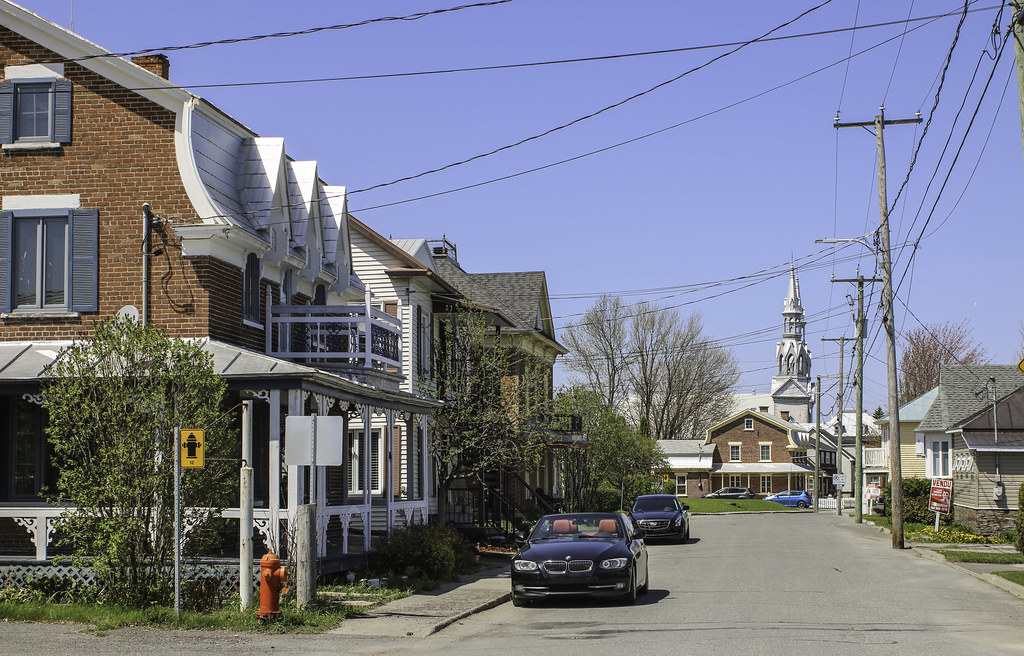
Saint-Michel church was built in 1839, replacing the first chapel from 1700. As usual, it overlooks the river and features two monumental steeples.
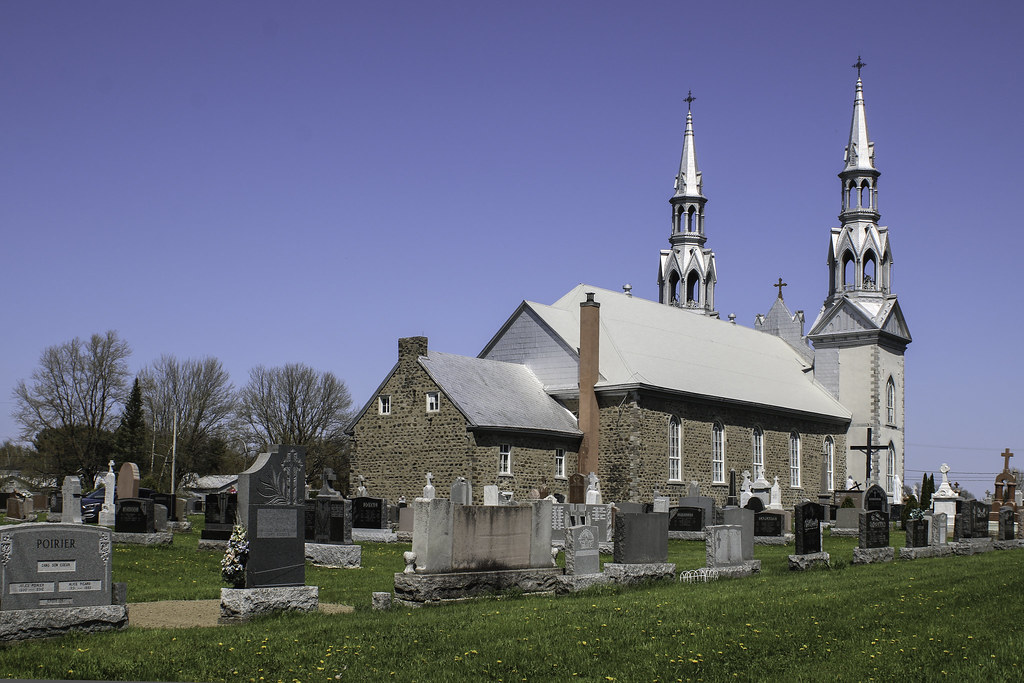
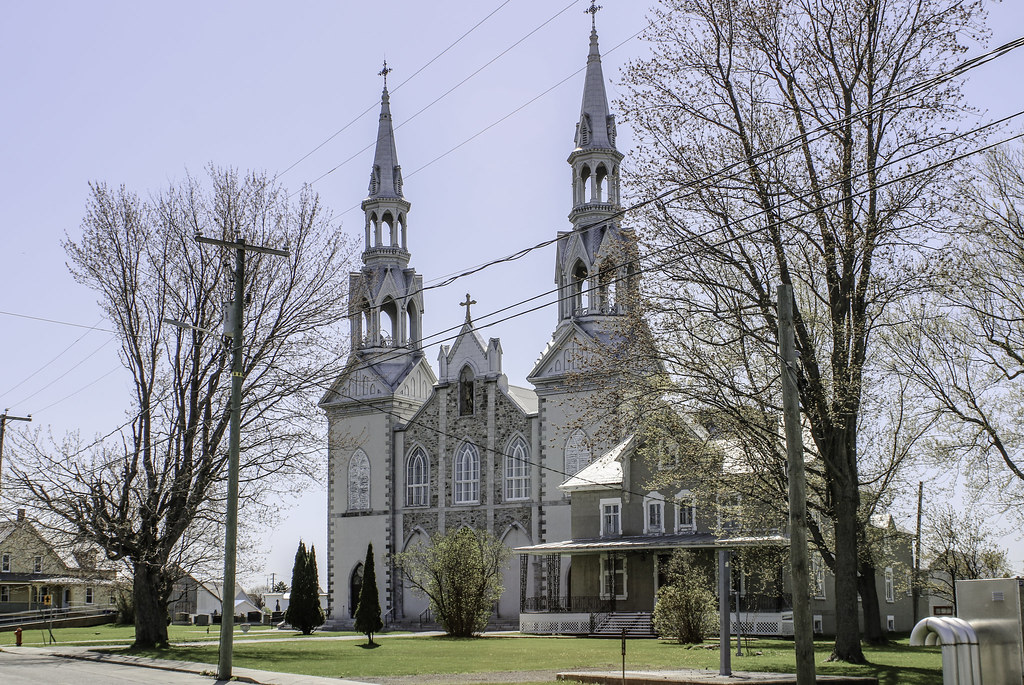
The presbytery
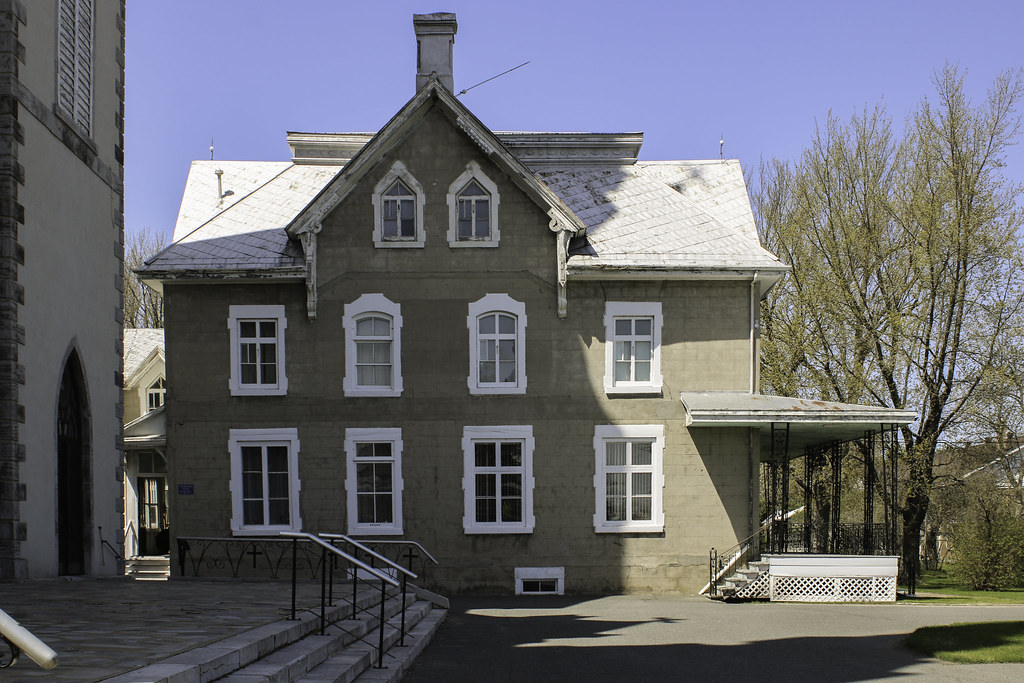
Just in front of the presbytery, between the main street and the river, there is a pleasant sloping green space offering views on the Yamaska, Sables island and the bridge. Monumental poplar trees.
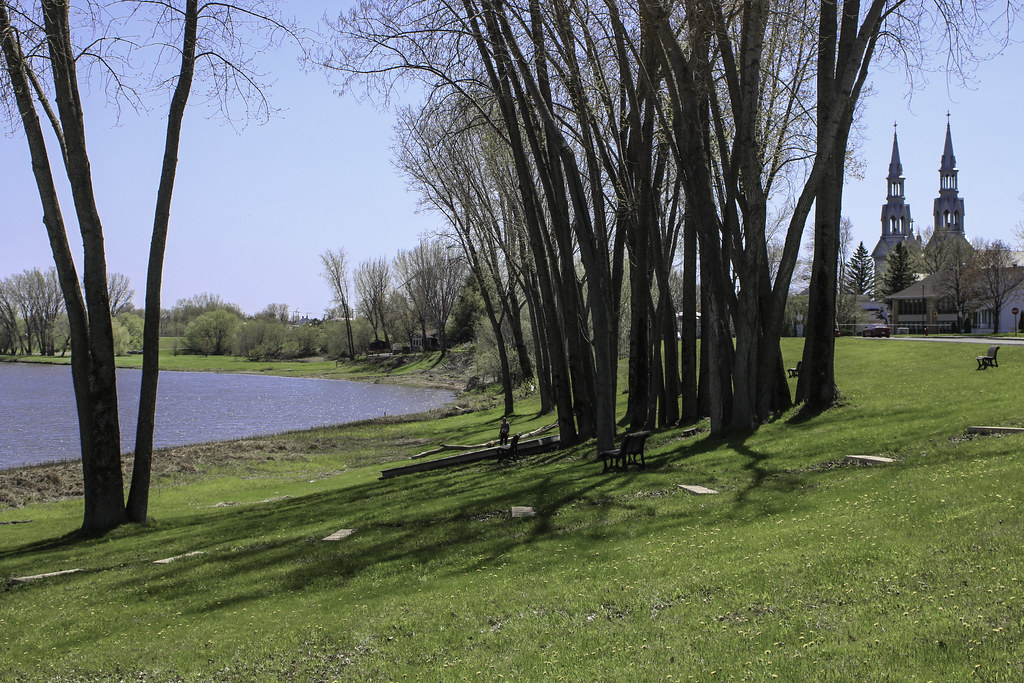
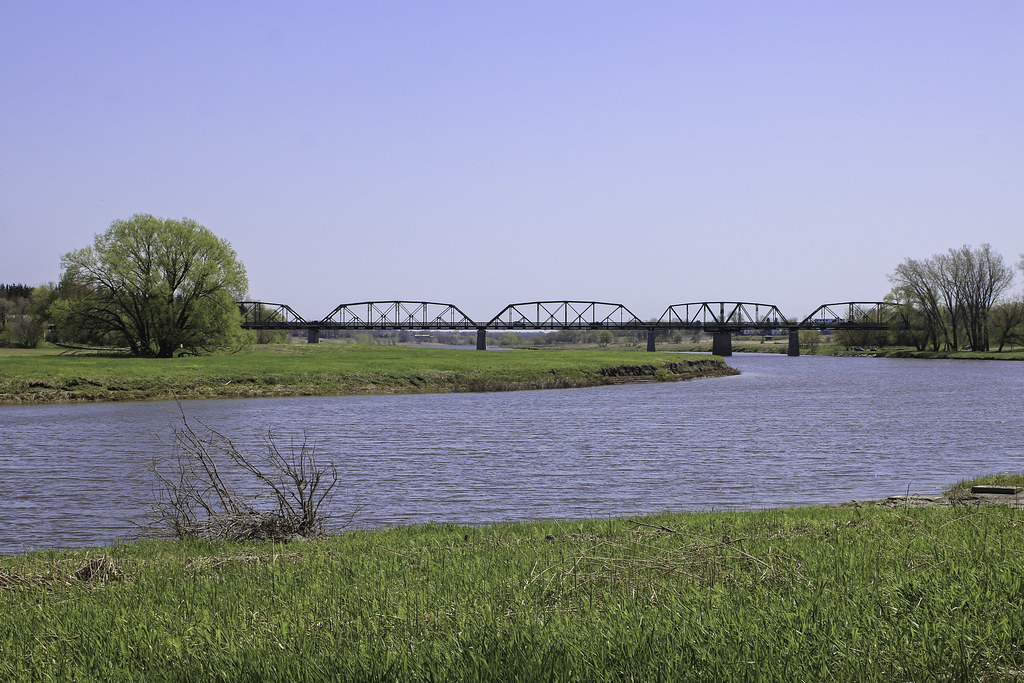

I then took the bridge to reach the opposite shore. View over the village, the river and the countryside.
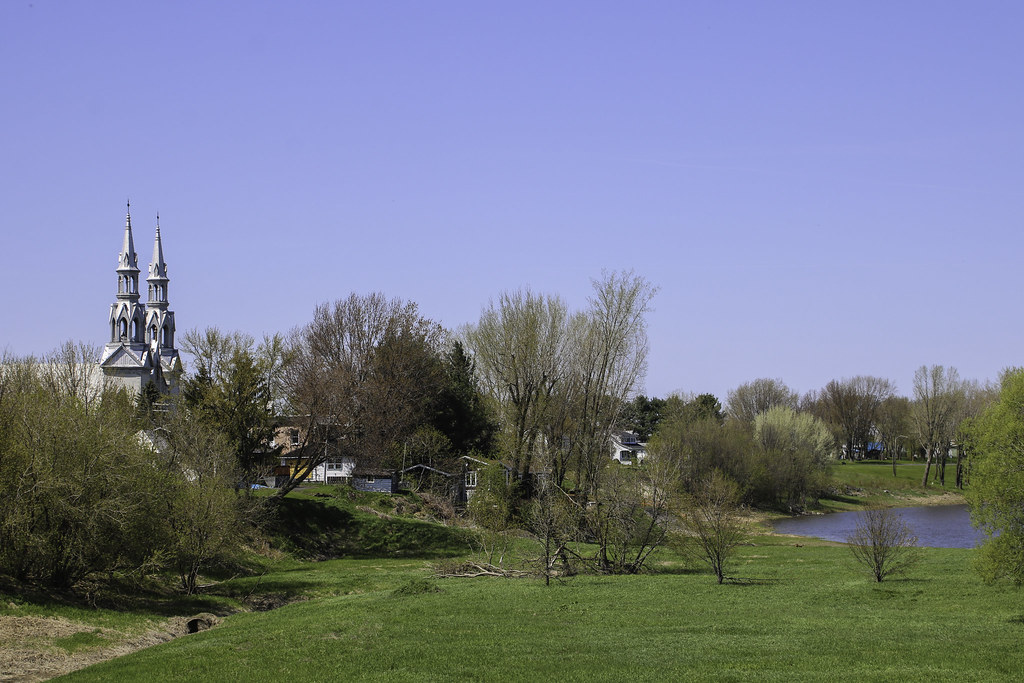
Sables island (l'île aux Sables) is still a communal pasture land for grazing cattle...
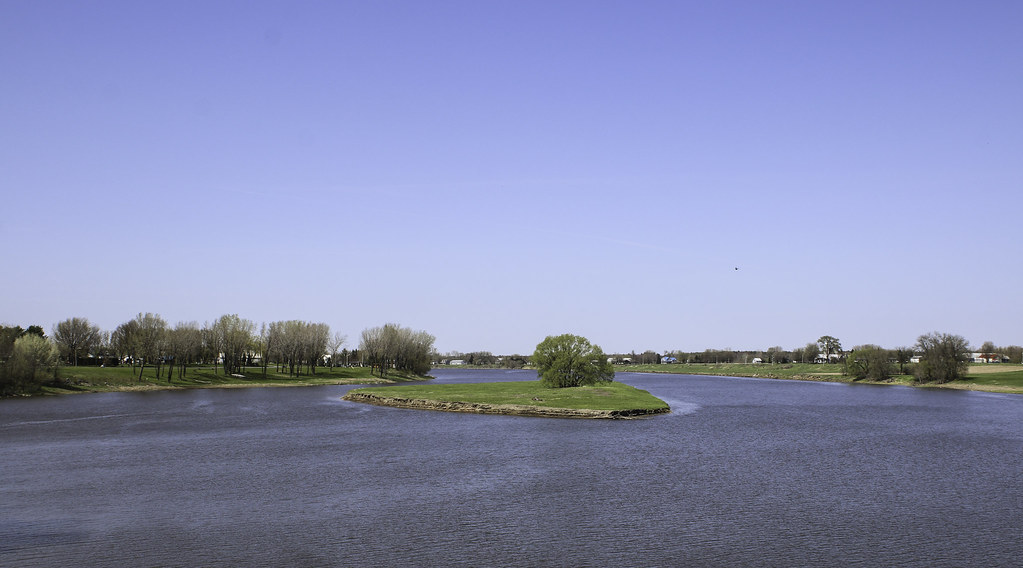
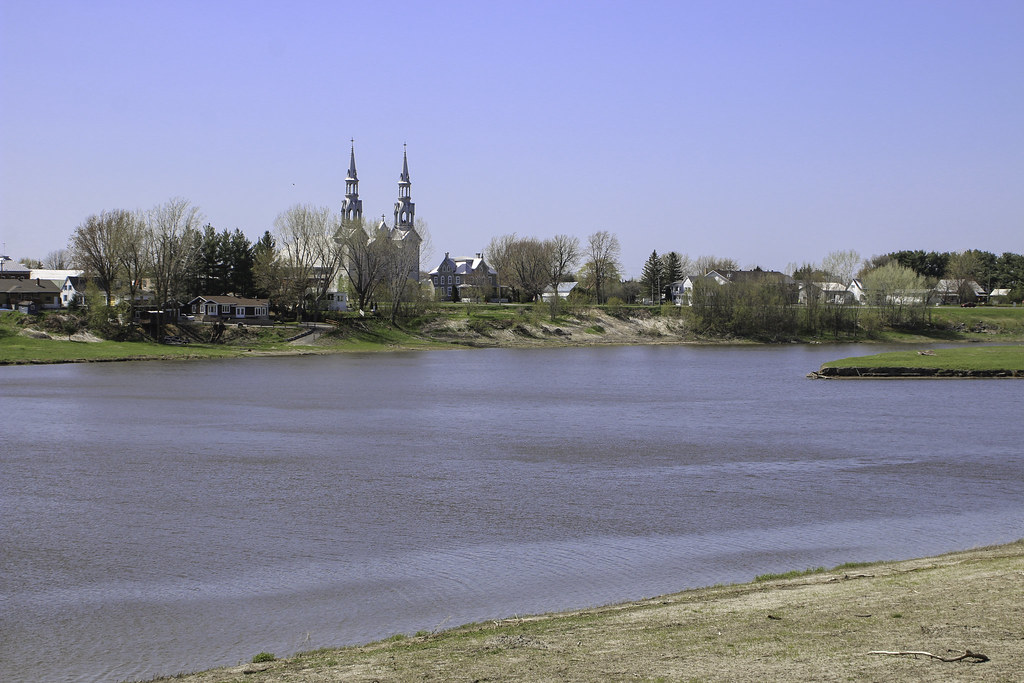


Population : 851
Saint-David is a small village located on David river, a tributary to the Yamaska river. The settlements around the village were late, taking place in 1751 with the concession of the Guire seigneury. A village was only founded 1831. The impressive white church is from 1840 and was designed by renowned architect Thomas Baillargé. It has always been a quaint farming village.
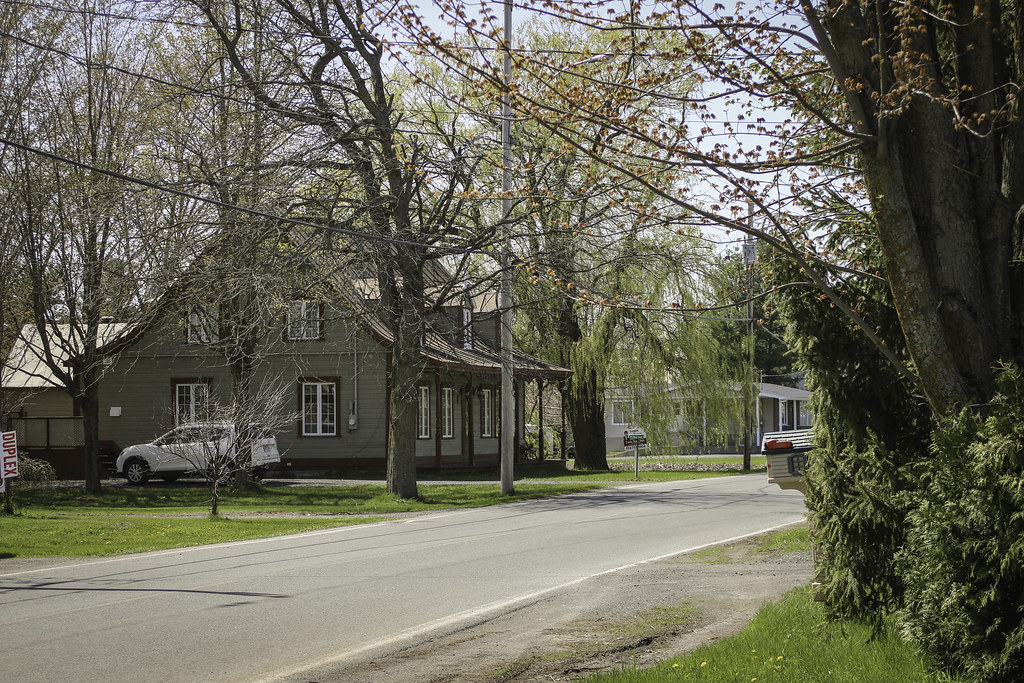
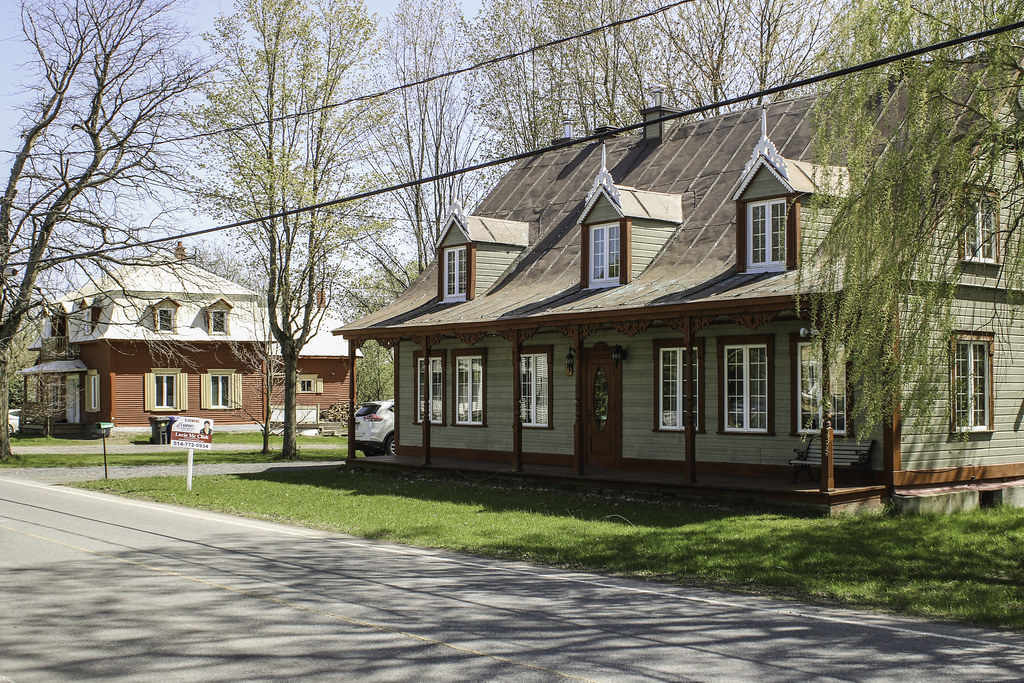
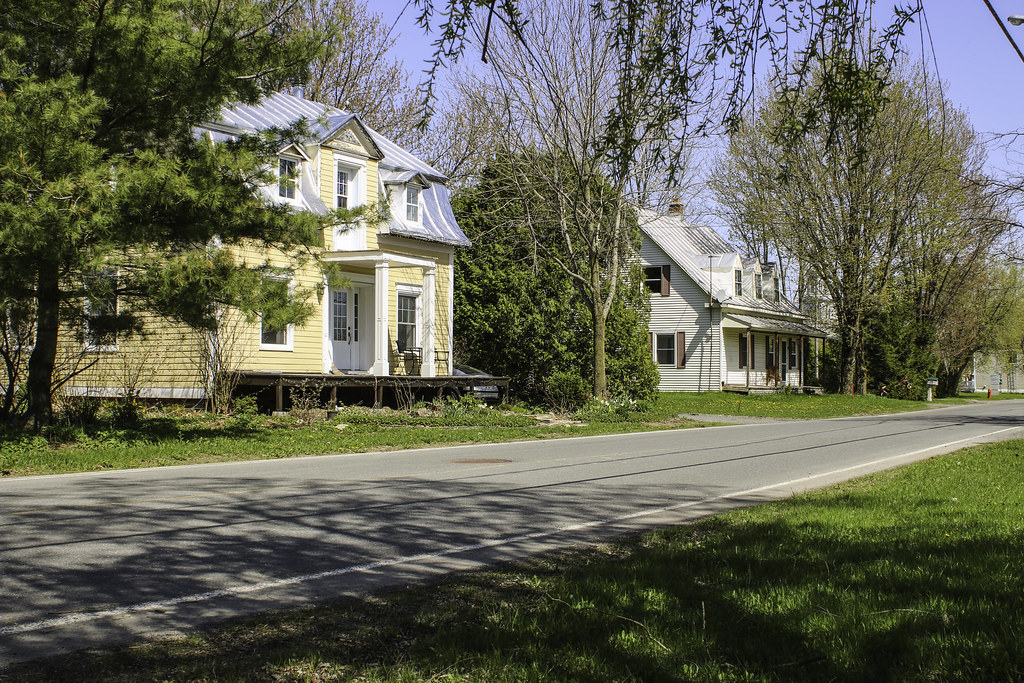
In the centre of this tiny village, Saint-David church is located on a wooden public square, as it is often the case in Québec. It's quite a large church for such a small place.
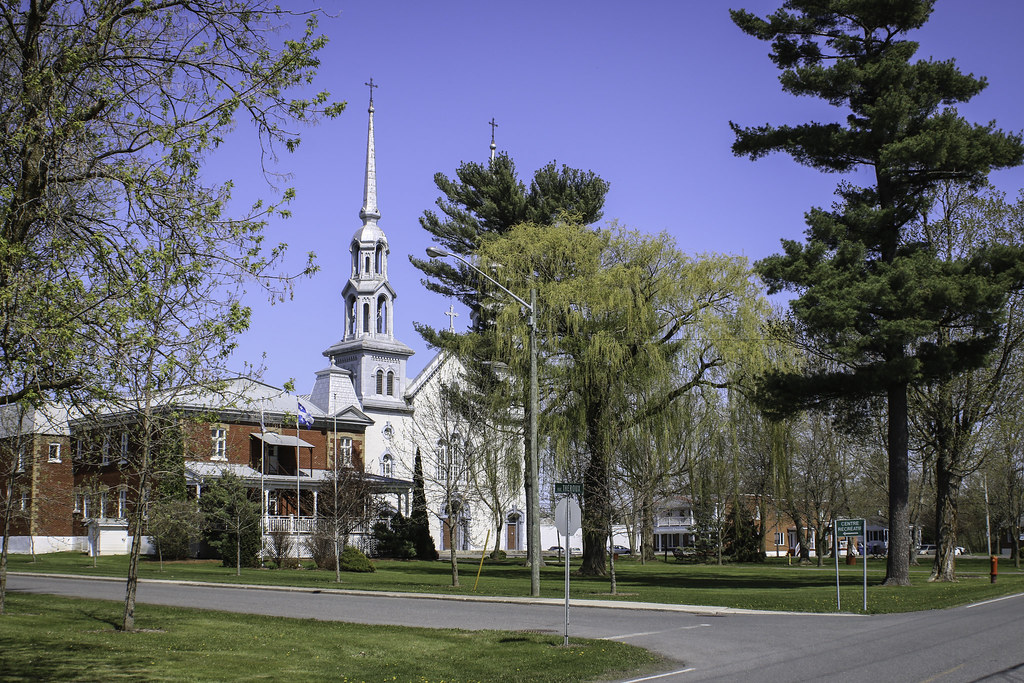
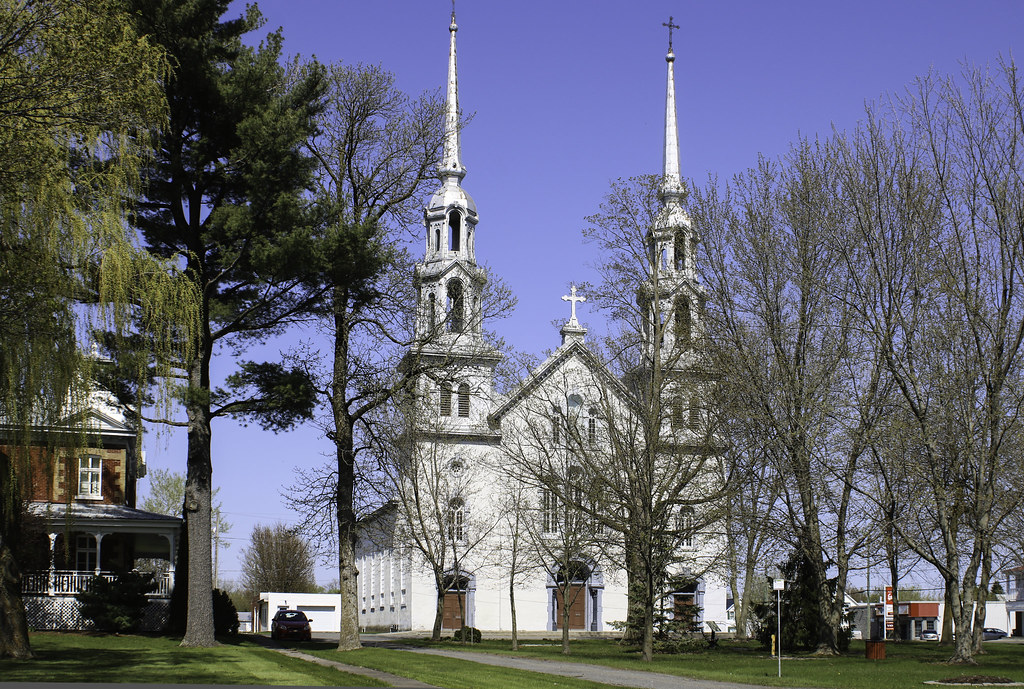
David river
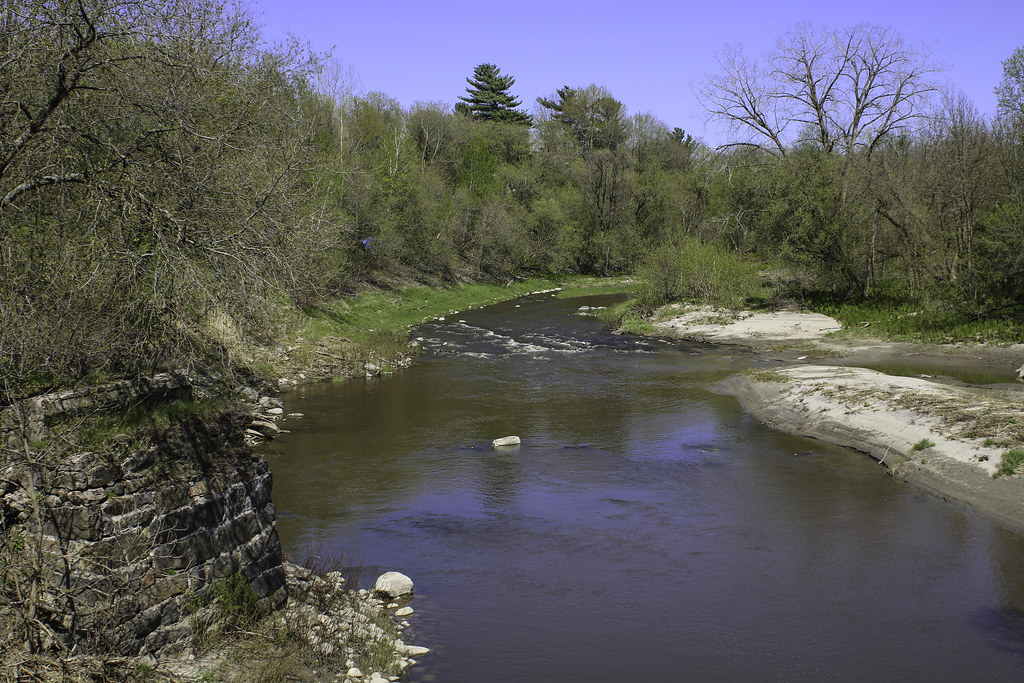
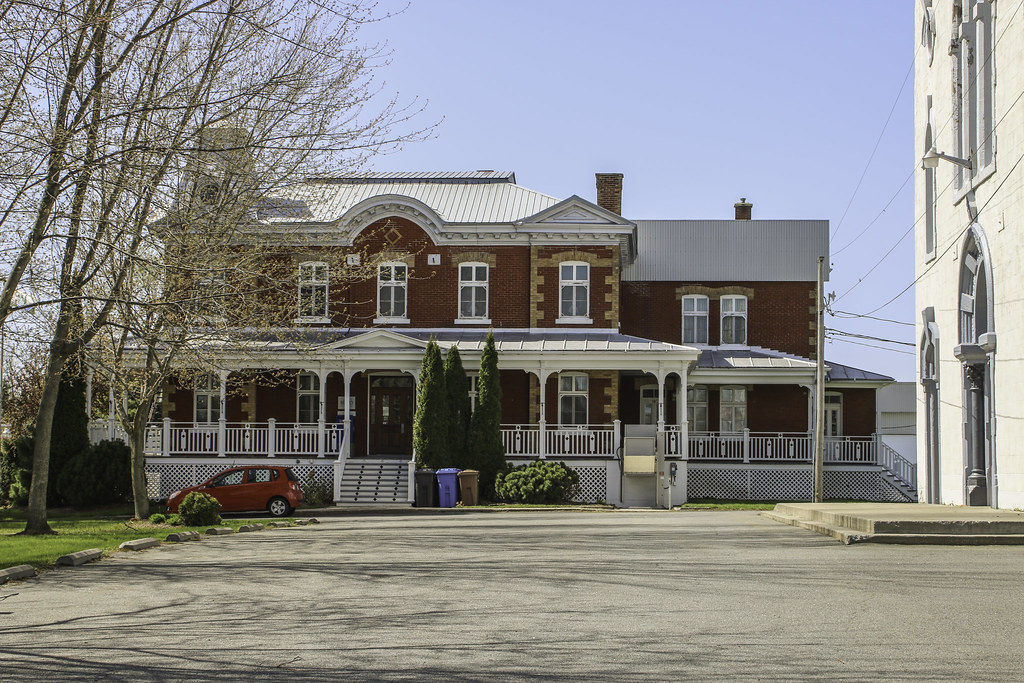
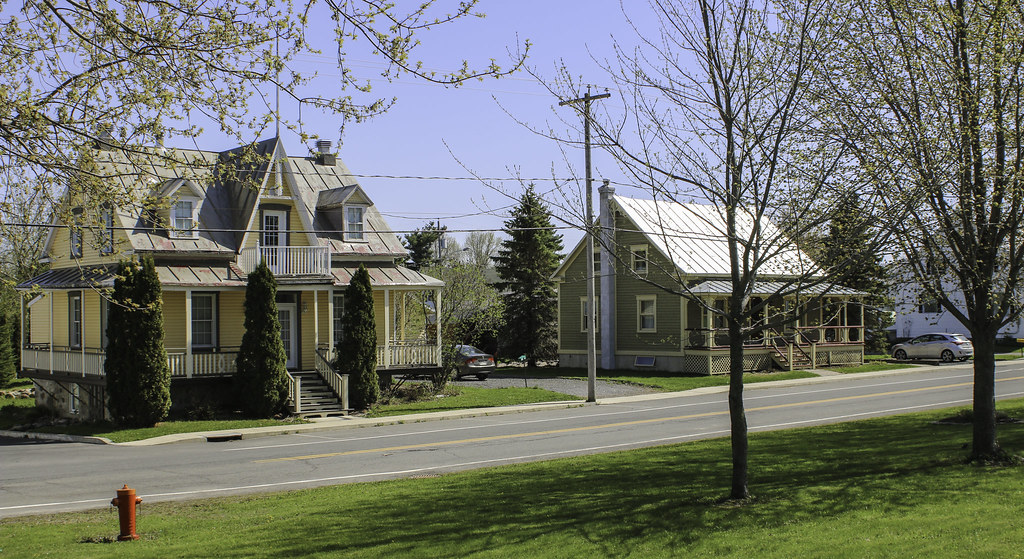
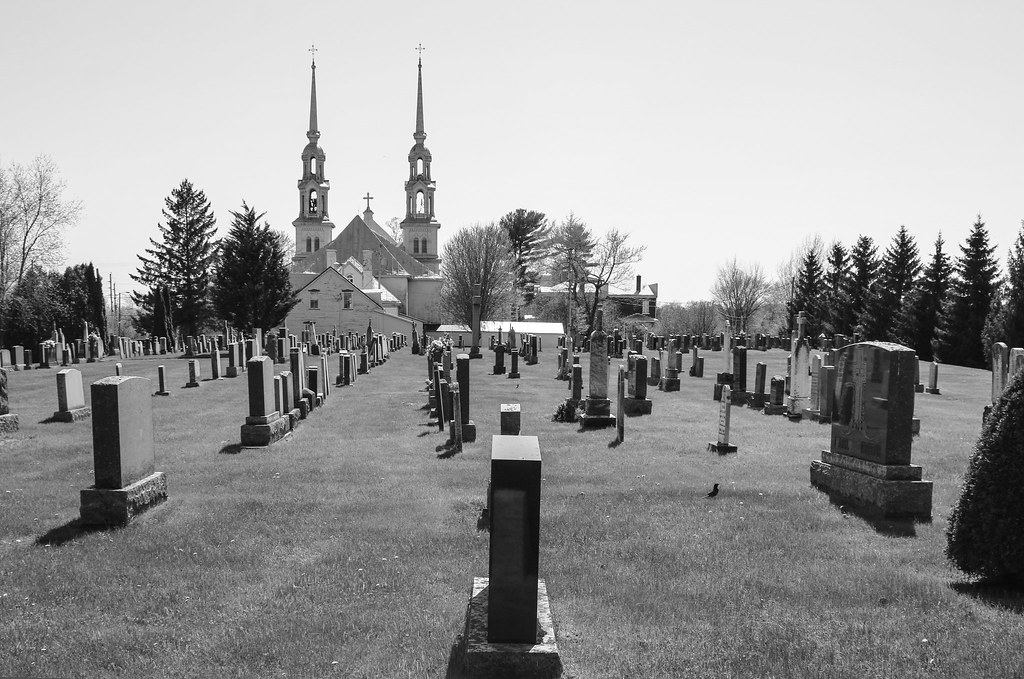
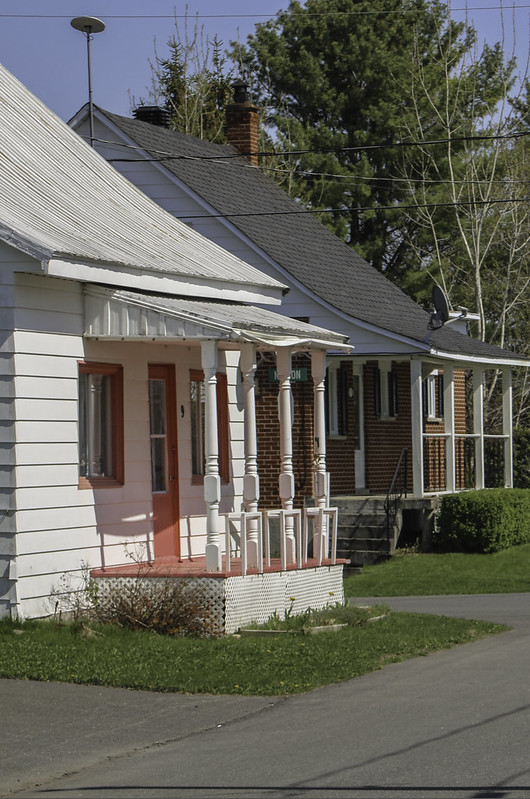
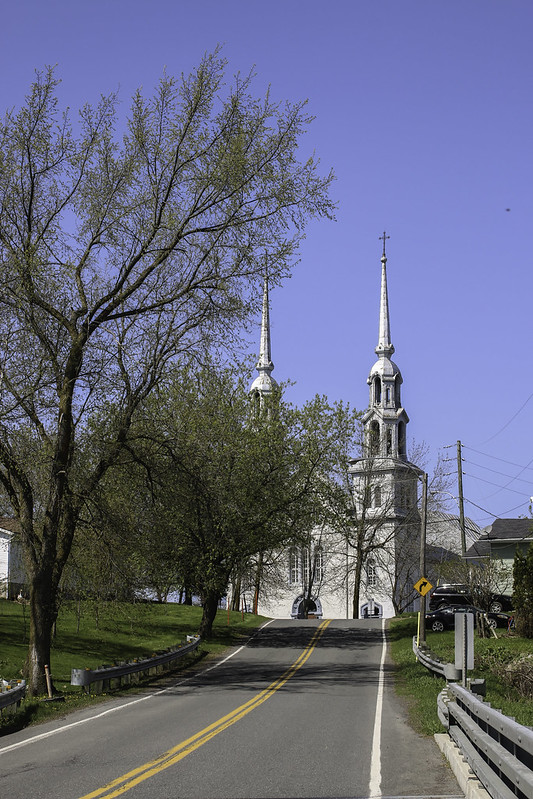

Population : 1580
Finally, our field trip ends in the big farming village of Saint-Guillaume, at the doors of the Centre-du-Québec region. The first settlers arrived in this part of the Upton township around 1800, from Louiseville, Maskinongé and Yamachiche. In 1833, the village is founded. It was first known as Ruisseau-des-Chênes ("Oak Stream").
We didn't have much time to explore the village, but it showcases interesting institutional architecture too. Nowadays, it is mostly know for its curd cheese production.
